Ph.D. in Medical Physics
General info.
- Faculty working with students: 59
- Students: 51
- Students receiving Financial Aid: 100% of PhD students
- Part time study available: No
- Application terms: Fall
- Application deadlines: November 30
Email: [email protected]
Website: https://medicalphysics.duke.edu

Program Description
The Medical Physics Graduate Program is an interdisciplinary program sponsored by five departments: radiology, radiation oncology, physics, biomedical engineering, and occupational and environmental safety (health physics). Four academic tracks are offered: diagnostic imaging physics, radiation oncology physics, nuclear medicine physics, and health physics. There are currently 51 faculty members associated with the program, and many of these are internationally recognized experts in their fields of study.
The program has available one of the best medical centers in the United States, with outstanding facilities in radiology and radiation oncology for the clinical training elements of the programs. The program has 5,000 square feet of dedicated educational space in the Hock Plaza Building and access to state-of-the-art imaging and radiation therapy equipment in the clinical departments.
Existing equipment and facilities include:
- radiation oncology equipment for 3-D treatment planning, image guided therapy, and intensity modulated radiation therapy;
- radiation protection lab equipment (whole body counter, high resolution germanium gamma detector, liquid scintillation counter);
- dedicated equipment for radiation dosimetry;
- nuclear medicine cameras and scanners in PET and SPECT;
- digital imaging laboratories with dedicated equipment for physics and clinical research in digital radiography and CT;
- the Ravin Advanced Imaging Laboratories;
- the Center for In Vivo Microscopy;
- laboratories for monoclonal antibody imaging and therapy;
- excellent resources for MRI imaging (including a research MR scanner, the Brain Imaging and Analysis Center, and the Center for Advanced Magnetic Resonance Development); and
- ultrasound laboratories in biomedical engineering.
The program is accredited by the Council on Accreditation of Medical Physics Educational Programs (CAMPEP).
- Medical Physics: PhD Admissions and Enrollment Statistics
- Medical Physics: PhD Completion Rate Statistics
- Medical Physics: PhD Time to Degree Statistics
- Medical Physics: PhD Career Outcomes Statistics
Application Information
Application Terms Available: Fall
Application Deadlines: November 30
Graduate School Application Requirements See the Application Instructions page for important details about each Graduate School requirement.
- Transcripts: Unofficial transcripts required with application submission; official transcripts required upon admission
- Letters of Recommendation: 3 Required
- Statement of Purpose: Required (See department guidance below)
- Résumé: Required
- GRE Scores: GRE General (Optional)
- English Language Exam: TOEFL, IELTS, or Duolingo English Test required* for applicants whose first language is not English *test waiver may apply for some applicants
- GPA: Undergraduate GPA calculated on 4.0 scale required
Writing Sample None required
Additional Components To help us learn more about you, please plan a video response to the following question:
How would a Duke PhD training experience help you achieve your academic and professional goals? (max video length 2 minutes). When you are ready, please use the Video Essay tab in the application to record your video.
We strongly encourage you to review additional department-specific application guidance from the program to which you are applying: Departmental Application Guidance
List of Graduate School Programs and Degrees
PhD Program in Medical Physics
The Committee on Medical Physics offers a program to provide aspiring medical physicists with the knowledge they will need in their future professions. Our program leads to the Doctor of Philosophy degree with an emphasis on research that provides preparation for careers in academia, industry, and/or clinical support roles.
Quick Links
- PhD Requirements
- Graduate Program Statistics
- Diversity and Inclusion
- Congratulations, Linnea Kremer! PhD Spring 2024
- Congratulations, Mena Shenouda! PhD Spring 2024
- Congratulations, Hadley DeBrosse! PhD Spring 2024
After completing my bachelor’s degree in physics with a minor in mathematics, I knew medical physics was the path for me. I was thrilled to discover there was a way to marry my love for physics with my newfound appreciation of medicine during an internship at Argonne National Laboratory where I worked on isotope production and heavy-ion therapy projects. Currently, I am beginning my third-year graduate studies under a joint appointment through the Graduate Research Cooperative working with Dr. Chin-Tu Chen (UChicago) and Dr. Jerry Nolen (ANL). I am focusing my thesis on targeted radionuclide therapy and isotope production. My main focus is on the radiobiological effects of Terbium-155, a promising Auger electron emitter. I am working on novel production and delivery methods of Tb-155 in order to explore the efficacy of Auger emitters in metastatic small-cell cancer treatment. I am in the process of designing targeting ligands which are selective not only to cancer cells but to cancer cell DNA specifically. I also work on nuclear reaction and cellular dosimetry modeling to optimize experimental outcomes. Outside the lab, I am an avid supporter of the Chicago music scene and can usually be found at a punk or metal show. I also enjoy powerlifting, tattooing, traveling, and anything else that gets the adrenaline pumping and energizes me to keep chasing crazy physics!
PhD student - Chen and Nolen Labs
- Accredited Degree Programs
- General Information/ Information for Program Directors
- Online Self Study Submission
- Graduate Accreditation Letters
- Standards for Accreditation of Graduate Educational Programs
- Supplementary Graduate Templates
- Graduate Program Sample Disclosure Statement
- 2022 Graduate Program Annual Report Analysis
- Graduate Application Template
- 2013 Supplement to Annual Graduate Program Survey
- Graduate Reaccreditation Report Template
- Graduate Report Template
- Graduate Education Program Committee Members
- 2009 ABR UPDATE
- Residency Education Programs
- Professional Doctorate in Medical Physics (DMP) Degree Programs
- Certificate Programs
- Closed Programs
- Continuing Education
- Public Disclosure
- Accreditation FAQs
- Information for Board/Committee Members

CAMPEP Accredited Graduate Programs in Medical Physics
Entries Last Updated April 18, 2024
† Indicates institutions offering tracks within their degree program that are not CAMPEP compliant. Students graduating from these institutions who have completed the CAMPEP accredited program will be identified through an appropriate certificate awarded on completion of the program.
‡ Indicates institutions that are accredited but are non-compliant with one or more CAMPEP standards. Public disclosure statements can be found at: http://www.campep.org/PublicDisclosure.asp
‡‡ Provisional accreditation for a period of up to three years may be granted at the discretion of the CAMPEP Board if circumstances preclude the awarding of initial or full accreditation. The most common reason for such provisional accreditation is in the case of a new program that has not yet graduated or admitted any students. Provisional accreditation may be extended when all the compliance conditions have been met.
Brown University Department of Radiation Oncology 225 Dyer Street Providence RI 02903 (401) 606-4283 Accredited degrees available:M.S. Program Director: Eric Klein, Ph.D. [email protected] https://www.brown.edu/med-physics-graduate-program/home
Carleton University † Physics Department 1125 Colonel By Drive Ottawa, ON K1S 5B6 CANADA (613) 520-2600 Ext:4053 Accredited degrees available: Ph.D. Program Director: Emily C. Heath, Ph.D. [email protected] https://physics.carleton.ca/ompi/graduate-studies
Columbia University Department of Applied Physics and Applied Mathematics 500 West 120th St., 200 S. W. Mudd, MC 4701 New York, NY 10027 (212) 854-4457 Fax: (212) 854-8257 Accredited degrees available:MS. Program Director: I. Cevdet Noyan, Ph.D. [email protected] https://apam.columbia.edu/medical-physics
Creighton University Department of Physics 2500 California Plaza Omaha, NE 68178 (402) 280-2159 / Fax: (402) 280-2140 Accredited degrees available: MS. Program Director: Michael G. Nichols, Ph.D. [email protected] https://www.creighton.edu/academics/programs/medical-physics-ms https://physics.creighton.edu https://physics.creighton.edu/content/ms-medical-physics-program-statistics
Dalhousie University Nova Scotia Health Authority 5820 University Avenue Room 3001A Halifax NS B3H 1V7 Canada (902) 473-6191 / Fax: Accredited degrees available:MS.,Ph.D. Program Director: Alasdair Syme, Ph.D. [email protected] http://www.dal.ca/academics/programs/graduate/medical-physics.html
Dartmouth College Thayer School of Engineering 14 Engineering Drive Hanover, NH 03755 603-650-6442/ Fax: Accredited degrees: Ph.D. Program Director: David Gladstone, Sc.D. [email protected] http://sites.dartmouth.edu/medphys/
Duke University † Medical Physics Graduate Program 2424 Erwin Road Suite 302 Durham, NC 27705 (919) 699-4775 Fax: (919) 684-1491 Accredited degrees available:M.S.,Ph.D. Program Director: Mark Oldham, Ph.D. [email protected] http://medicalphysics.duke.edu/
East Carolina University† Medical and Biomedical Physics Graduate Programs Department of Physics Mailstop #563 Greenville, NC 27858 Accredited degrees available: M.S., Medical Physics., Biomedical Physics Program Director: Michael Dingfelder,Ph.D. (252) 328-6739 / (252) 328-6314 [email protected] https://physics.ecu.edu/ https://physics.ecu.edu/facts-and-figures/
Florida Atlantic University Department of Physics Medical Physics Programs 777 Glades Road Boca Raton, FL 33431 Accredited degrees available: M.S., Medical Physics Program Director: Theodora Leventouri, Ph.D. (561) 297-2695 / Fax: (561) 297-2662 [email protected] http://physics.fau.edu/programs/psmmp/index.php Georgetown University Department of Medical Physics 3970 Reservoir Road NW Washington DC 20057 Accredited degrees available: M.S., Medical Physics Program Director: Stanley Fricke. Ph.D. (202)687-2232 / Fax: 253-681-9619 [email protected]
Georgia Institute of Technology Medical Physics Programs 770 State Street, RM-3-39S Atlanta, GA 30332-0745 Accredited degrees available: M.S., Ph.D. Program Director: Steven Biegalski, Ph.D. (404) 385-5973 [email protected]
Hofstra University Department of Physics and Astronomy Hofstra College of Liberal Arts and Sciences 151 Hofstra University, 102 Berliner Hall Hempstead, NY 11549-1000 Medical Degrees available: M.S., Medical Physics Program Director: Jenghwa Chang, Ph.D. (516)321-3136 / Fax (516)470-8445 [email protected] hofstra.edu/medicalphysics
Indiana University/Purdue University Joint Medical Physics Program Purdue University School of Health Sciences 550 Stadium Mall Drive West Lafayette, IN 47907-2051 Program Director: Ulrike Dydak, Ph.D. Tel: (765) 494-0550 / Fax: (765) 496-1377 Accredited degrees available: M.S., Ph.D. [email protected] http://www.purdue.edu/hhs/hsci/students/graduate/programs/medical_physics.html
Johns Hopkins University CRB II, 4M61 1550 Orleans St Baltimore, MD 21231 Program Director: George Sgouros, Ph.D. Tel: (410) 614-0116 / Fax: (413) 487-3753 [email protected]
Louisiana State University Department of Physics and Astronomy 202 Nicholson Hall Baton Rouge, LA 70803-4001 Program Director: Wayne D. Newhauser, Ph.D. email: [email protected] Program Administrator Tel: (225) 578-2163 / Fax (225) 578-0824 Accredited degrees available: M.S. in Medical Physics and Health Physics,Ph.D. http://www.phys.lsu.edu/medphys/
McGill University Department of Medical Physics McGill University Health Centre (Glen Site) DS1 7141 1001 boul. Decarie Montreal, Quebec H4A 3J1, Canada Program Director: Shirin A. Enger, Ph.D. Tel: (514) 934-1934 (44161)/ Fax: (514) 934-8229 Accredited degrees available: M.S., Ph.D [email protected] http://www.mcgill.ca/medphys/academic
McMaster University 699 Concession Street Hamilton ,Ontario CANADA Program Director: Marcin Wierzbicki, Ph,D. Tel: (905) 387-9711 [email protected]
National University of Ireland, Galway School of Physics Newcastle Road Galway, Ireland Accredited degrees: M.S., Medical Physics Program Director:Christopher Kleefeld, Ph.D. 353 (0) 91-495383 / Fax: 353 (0) 91-494584 [email protected]
Oregon Health and Science University Medical Physics Graduate Program 2730 SW Moody Avenue Portland, OR 97201 Program Director: Thomas Griglock, Ph.D. [email protected] Tel: (503) 494-1214 / Fax: (503) 494-7037 Accredited Degrees Available: M.S., Ph.D. https://www.ohsu.edu/school-of-medicine/medical-physics-graduate-program San Diego State University Physics-MC1233 5500 Campanile Drive San Diego, CA 92182 Program Director: Usha Sinha, Ph.D. (619) 594-1791 / Fax: (619) 594-5485 Accredited degrees available: M.S. [email protected]
SUNY Stony Brook University† Radiology Department HSC L-4 RM 092 Stony Brook, NY 11794 Program Director: Terry M. Button, Ph.D. (516) 444-3841 / Fax: (516) 444-7538 Accredited degrees available: M.S., Ph.D. [email protected] http://bme.sunysb.edu/grad/medicalphysics.html The University of Texas MD Anderson Cancer Center UTHealth Houston Graduate School of Biomedical Science Graduate School of Biomedical Sciences Department of Imaging Physics 1400 Pressler St. Unit 1472 Houston, TX 77030 Program Director: Rebecca M. Howell, Ph.D. Tel: (713) 563-2493 / Fax: Accredited degrees available: M.S., Ph.D. [email protected] https://gsbs.uth.edu/medphys/
Thomas Jefferson University Department of Radiation Oncology 111 South 11th Street, Rm G-316 Philadelphia, PA 19107 Program Director: Jacqueline G. Emrich, Ph.D. Tel: (215) 762-3408 / Fax: (215) 762-8523 Accredited degrees available: M.S. [email protected] https://www.Jefferson.edu/MedicalPhysicsMS
Toronto Metropolitan University† Department of Physics 350 Victoria St. Toronto ON Canada M5B 2K3 Program Director: Raffi Karshaffian, Ph.D. Tel: (416) 979-5000 x7536 / Fax: (416) 979-5343 Accredited degrees available: M.S., Ph.D. [email protected] https://www.torontomu.ca/physics/graduate-studies/
Universite de Montreal‡ Department de Radio-Oncologie Centre hospitalier de 1' Universite de Montreal 1000 rue St-Denis Montreal QCH2X 0C1 Canada Program Director: Jean-Francois Carrier, Ph.D. Tel: (514) 343-6111 x34879 Accredited degrees available: M.S., Ph.D. [email protected]
Université Laval Department of Radiation Therapy 2325, rue de l'Université Québec (Québec) G1V 0A6 Canada Program Director: Luc Beaulieu, Ph.D. Tel: (418) 525-4444 Ext: 15315 / Fax: (418) 691-5268 Accredited degrees available: M.Sc., Ph.D. [email protected] view website
University at Buffalo (SUNY) Medical Physics Program Radiol, Neurosurg, Biomed Engin, MAE, EE 955 Main Street Canon Stroke and Vascular Res Center Buffalo, NY 14203 Program Director: Stephen Rudin, Ph.D. Tel: (716) 829-5408 / Fax: (716) 829-2212 Accredited degrees available: M.S., Ph.D. [email protected] http://medicine.buffalo.edu/education/medical-physics.html
University College Dublin Centre for Physics in Health and Medicine School of Physics O'Brien Centre for Science, North Belfield Dublin 4, Ireland Program Director: Sean Cournane, Ph.D. Tel: +353 1 7162222 Accredited Degrees available:M.S. [email protected] https://www.ucd.ie/cphm/study/mscinmedicalphysics/ University of Alberta Department of Medical Physics 11560 University Avenue Edmonton, T6G 1Z2, Canada Program Director: Gino Fallone, Ph.D. Tel: (780) 432-8750/Fax: (780) 432-8615 Accredited degrees available: M.Sc., Ph.D. [email protected] http://mp.med.ualberta.ca
UC Berkeley/UC San Francisco 1600 Divisadero St, Box 1708, Suite H1030 San Francisco CA 94115 Program Director: J Adam M Cunha, Ph.D. Tel: ((415)353-7031) / Fax: Accredited degrees available: [email protected]
University of British Columbia Department of Physics and Astronomy Medical Physics Program 6224 Agricultural Road Vancouver, BC V6T 1Z1, Canada Program Director: Stefan Reinsberg, Ph.D. Tel: (604) 822-2925 / Fax: (604) 822-5324 Co-director: Cheryl Duzenli, Ph.D. Tel: (604) 877-6000 x 2021 Accredited degrees available: M.Sc., Ph.D. [email protected] http://www.phas.ubc.ca/graduate-program-medical-physics-stream-requirements
University of British Columbia - Okanagan ASC 354 - 3187 University Way Kelowna, BC CANADA V1V 1V7 Program Director: Christina Haston, Ph.D. (250) 807-9886 Accredited degrees available: M.Sc.,Ph.D. [email protected]
University of Calgary Tom Baker Cancer Centre Department of Medical Physics Tom Baker Cancer Centre 1331 - 29 Street NW Calgary, AB T2N 4N2 Program Director: Charles Kirkby, Ph.D., FCCPM Tel: (403) 388-6872 Accredited degrees available: M.Sc, Ph.D. [email protected] http://www.ucalgary.ca/rop/ -->
University of California Los Angeles The Departments of Radiological Sciences, Radiation Oncology, and Molecular & Medical Pharmacology Physics & Biology in Medicine Interdepartmental Graduate Program (Formerly Biomedical Physics Interdepartmental Graduate Program) 650 Charles E Young Dr S, RM B2-115CHS Los Angeles, CA 90095-1721 Program Director: Michael F. McNitt-Gray, Ph.D. Tel: (310) 825-7811 / Fax: (310) 825-7705 Accredited degrees available: M.S., Ph.D. [email protected] [email protected] http://pbm.ucla.edu/ -->
University of Chicago Graduate Programs in Medical Physics MC 2026 5841 S. Maryland Ave. Chicago, IL 60637 Program Director: Samuel G. Armato, III, Ph.D. Tel: (773) 834-3044 / Fax: (773) 702-0371 Accredited degrees available: Ph.D. [email protected] http://medicalphysics.uchicago.edu/
University of Cincinnati Department of Radiation Oncology 234 Goodman St. ML 0757 Cincinnati, Ohio 45267-0757 Program Director: Michael A.S. Lamba, Ph.D. Tel:(513)584-9028 / Fax: (513) 584-4007 Accredited degrees available:M.S.,Combined Program (DMP) [email protected] [email protected] https://med.uc.edu/radonc/graduate/medicalphysics/program
University of Florida Division of Radiological Physics Department of Radiology 1600 SW Archer Rd. P.O. Box 100374 Gainesville, FL 32610-0374 Program Director: Stephanie Leon, Ph.D. Tel: (352) 594-2492 / Fax Accredited degrees available: M.S., Ph.D. [email protected] https://medphysics.med.ufl.edu/
University of Kentucky Department of Radiation Oncology 800 Rose Street Lexington, KY 40536 Program Director: Dennis Cheek, Ph.D. Tel: (859) 323-9947 Accredited degrees available: M.S.,Ph.D. [email protected] https://medicine.uky.edu/departments/radiationmedicine/medical-physics-graduate-program
University of Manitoba † Department of Physics and Astronomy Allen Building 30A Sifton Road Winnipeg, MB R3T 2N2, Canada Program Director: Stephen Pistorius, P.Phys., Ph.D. Tel: (204) 787-2211 / Fax: (204) 775-1684 Accredited degrees available: M.Sc., Ph.D. [email protected] https://www.sci.umanitoba.ca/physics-astronomy/
University of Massachusetts Lowell Department of Physics-Radiological Sciences Lowell, MA 01854 Program Director: Erno Sajo, Ph.D. Tel: (978) 934-3288 Accredited Degrees available:M.S., Ph.D. [email protected] http://www.uml.edu/MedPhys
University of Miami Biomedical Engineering Department 1251 Memorial Drive Coral Gables, FL 33146 Program Director: Weizhao Zhao, Ph.D. Tel: 305-284-6763 / Fax 305-284-6494 Radiation Oncology Department 1475 NW 12th Ave Miami, FL 33136 Assistant Program Director: Nesrin Dogan, Ph.D. Tel: 305-243-8629 / Fax 305-243-9833 Accredited Degrees available:M.S., Ph.D. [email protected] [email protected] https://bme.coe.miami.edu/graduate/medical-physics/index.html
University of Minnesota Department of Radiation Oncology Mayo Mail Code 494 420 Delaware St SE Minneapolis, MN 55455 Program Director: Parham Alaei, Ph.D. Tel: 612-626-6505 / Fax 612-624-5445 Accredited Degrees available:M.S., Ph.D. [email protected] https://www.radiationoncology.umn.edu/medical-physics-graduate-program
University of Nevada Las Vegas† ** Department of Health Physics and Diagnostic Sciences 4505 Maryland Parkway Box 453037 Las Vegas, NV 89154 Program Director: Steen Madsen, Ph.D. Tel: (702) 895-1805 / Fax: (702) 895-4819 Accredited degrees available: M.S., Combined Program (DMP) [email protected]
University of New Mexico Department of Radiology MSC 10 5530 1 University of New Mexico Albuquerque, NM 87131-0001 Program Director: Reed Selwyn, Ph.D. Tel: (505) 272-4433 Accredited degrees available: M.S. [email protected] https://radiology.unm.edu/medphys/graduate-studies/program_info.html
University of Oklahoma Dept. of Radiological Sciences. Garrison Tower 940 NE 13th Street, Suite 4G 4250 Oklahoma City, OK 73104-5008 Program Director: J. R. Sonnad, Ph.D. Tel: (405) 271-8001 Ext: 52415 / Fax: 405-271-6404 Accredited degrees available: M.S.,Ph.D. https://medicine.ouhsc.edu/Academic-Departments/Radiological-Sciences/Academic-Programs/Medical-Radiological-Physics-Graduate-Program [email protected]
University of Pennsylvania Perelman School of Medicine Department of Radiation Oncology Perelman Center for Advanced Medicine 3400 Civic Center Blvd. Philadelphia, PA 19104 Program Director: Shannon O' Reilly, Ph.D.,DABR Tel: (215) 615-5434 / Fax: Accredited degrees available: M.S.,Ph.D. Shannon.O'[email protected] https://www.med.upenn.edu/mpp/
University of Rhode Island 2 Lippitt Road Kingston, RI 02881 Program Director: Michael Antosh, Ph.D. Tel: (401) 874-2048 / (401) 874-2380 Accredited degrees available: M.S. [email protected] http://web.uri.edu/physics/medical-physics/
University of South Florida Moffitt Cancer Center 12902 Magnolia Dr (MCC-RAC ONC) Tampa, FL 33612 Accredited degree available: Ph.D. Program Director: Eduardo G. Moros, Ph.D. Tel: (813) 745-1075 Fax: (813) 745-7231 [email protected] http://physics.usf.edu/graduate/medical/
University of Tennessee Knoxville 1412 Circle Drive Knoxville, TN 37916 Program Director: Michael Howard, Ph.D. Tel: (423) 493-1691 / Fax: (423) 493-6828 Accredited degrees available: M.S. [email protected] -->
University of Texas San Antonio† Department of Radiology 7703 Floyd Curl Drive, Rm. 652E San Antonio, TX 78229-3900 Program Director: Andrew J. Sampson, PhD, DABR(D) Tel: (210) 567-0655/ Fax: (210) 567-0494 Accredited degrees available: Ph.D. [email protected] https://www.uthscsa.edu/academics/biomedical-sciences/programs/radiological-sciences-phd https://www.uthscsa.edu/academics/biomedical-sciences/programs/radiological-sciences-phd/statistics
University of Texas Southwestern Department of Radiation Oncology 2280 Inwood Road Dallas, TX 75235 Program Director: You Zhang, Ph.D. Tel: (919) 627-3199 / Fax: Accredited degrees available: Ph.D. [email protected] https://www.utsouthwestern. edu/education/medical-school/ departments/radiation- oncology/education-training/ physics-training-program/bme/ University of Toledo Department of Radiation Oncology 2050E Dana Cancer Center 3000 Arlington Ave Toledo, OH 43614-2598 Program Director: David Pearson, Ph.D. Tel: (419) 383-6780 / Fax: Accredited degrees available: M.S., Ph.D. [email protected] http://www.utoledo.edu/med/depts/radther/ University of Toronto Department of Medical Physics Princess Margaret Cancer Center 601 University Avenue Toronto, ON CANADA. M5G 2M9 Program Director: Jean-Pierre Bissonnette, Ph.D. Tel: (416) 946-4501 Ext:2151 / Fax: (416) 946-6566 [email protected]
University of Victoria BC Cancer Agency Graduate Program in Medical Physics Medical Physics Department BC Cancer Agency - Vancouver Island Centre 2410 Lee Avenue Victoria, BC V8R 6V5 CANADA Program Director: Wayne A. Beckham, Ph.D., FCCPM Tel: (250) 519-5620 / Fax (250) 519-2024 Accredited degrees available: M.Sc., Ph.D. [email protected] http://www.uvic.ca/science/physics/medicalphysics/
University of Wisconsin † Medical Physics University of Wisconsin Medical Physics, Room 1005 WIMR 1111 Highland Ave Madison, WI 53705-2275 Program Director:Brian Pogue, Ph.D. Tel: (608) 263-8037 / Fax: (603) 646-3856 Accredited degrees available:M.S., Ph.D [email protected] http://www.medphysics.wisc.edu http://www.medphysics.wisc.edu/graduate/facts/ University of Wollongong Centre for Medical Radiation Physics School of Physics Faculty of Engineering and Information Sciences Wollongong 2500 Australia Tel: +61244215296 Accredited degrees available: M.S., Ph.D. [email protected]
Vanderbilt University ** Departments of Radiology and Radiation Oncology 2220 Pierce Avenue Preston Research Building B-1003 Nashville, TN 37232-5671 Program Director: John G. Eley, Ph.D. Tel: (615) 875-1625 Fax: (615) 343-0161 Accredited degrees available: M.S., Combined Program (DMP) [email protected] https://medschool.vanderbilt.edu/dmp/
Virginia Commonwealth University VCU Department of Radiation Oncology PO Box 980058 401 College Street Richmond VA 23298-0058 Program Director: William Y. Song, Ph.D., DABR Tel: 1- (804)-628-3457/ Fax: 1-(804)-827-1861 Accredited degrees available: M.S., Ph.D. [email protected] https://radonc.vcu.edu/education/graduate-education/
Wake Forest University Department of Radiation Oncology Medical Center Boulevard Winston-Salem, NC 27157 Program Director: William Dezarn, Ph.D. Tel: (336) 713-6511 / Fax: (336) 713-6565 Accredited degrees available: M.S., Ph.D. [email protected] https://school.wakehealth.edu/Education-and-Training/Graduate-Programs/Medical-Physics
Washington University in St. Louis Department of Radiation Oncology 4921 Parkview Place, Campus Box 8224 St. Louis, MO 63105 Program Director: Michael B. Altman, Ph.D. Tel: (314) 362-4818 Accredited degrees available: M.S. [email protected] https://radonc.wustl.edu/education/master-of-science-in-medical-physics/
Wayne State University Karmanos Cancer Institute Department of Radiation Oncology 4100 John R. Street Detroit, MI 48201 Program Director: Jay Burmeister, Ph.D. Tel: (313) 745-2483 / Fax: (313) 966-2314 Accredited degrees available: M.S., Ph.D. [email protected] http://medicalphysics.med.wayne.edu/
Western University † (Formerly the University of Western Ontario ) Medical Biophysics Graduate Program Schulich School of Medicine and Dentistry Room 407 Medical Sciences Bldg. University of Western Ontario London, Ontario N6A 5C1 Program Director: Kathleen Surry, Ph.D. Tel: (519) 685-8605 / Fax (519) 685-8658 Accredited degrees available: M.Sc., Ph.D. [email protected] http://www.schulich.uwo.ca/biophysics/graduate/programs/medical_physics.html
CAMPEP's Privacy Policy Use of the site constitutes your acceptance to its terms and conditions .
CAMPEP is a non-profit organization dedicated to the advancement of medical physics. The information provided in this website is offered for the benefit of its members, trainees and the general public. CAMPEP does not independently verify or substantiate the information provided on other websites that may be linked to this site.
- Admissions Overview
- Undergraduate Admissions
- Graduate Degree Programs
- International Student Admissions
- Academics Overview
- Undergraduate Majors & Minors
- Graduate School
- Purdue Online Learning
- Tour Purdue’s Campus
- Research and Innovation Overview
- Research & Partnerships
- Corporate & Global Partnerships
- Purdue Research Foundation
- About Purdue
- Office of the President
- Commitment to Free Speech
- Student Life at Purdue
- Purdue Activity & Wellness
- Campus Inclusion
- Prospective Students
- Current Students
- Faculty and Staff
- Purdue Northwest
- Purdue Fort Wayne
- Purdue Global
- Purdue Online
Medical Physics Graduate Program (CAMPEP Accredited)
School of Health Sciences
Medical physics is an applied branch of physics that applies physical energy to the diagnosis and treatment of disease. Professional medical physicists are involved in clinical service, consultation, research and teaching.
At Purdue, the medical physics graduate program provides a strong foundation in radiological and applied physics training within the medical physics profession — but also offers advanced coursework, clinical laboratories, internships and opportunities to participate in cutting-edge research. The medical physics program is closely aligned with biophysics, bioengineering, medical schools and health physics (radiation protection and control).
Our goal is to provide courses and experience with clinical systems to enhance problem-solving skills and individual thought to further advance the field of medical physics.
The Purdue medical physics program is CAMPEP -accredited.
Program Highlights
Meet and learn from your peers by joining the Medical Physics Club of Purdue or the Purdue Association for Magnetic Resonance .
Program Statistics
- 2023 to 2027 (PDF)
- 2018 to 2022 (PDF)
- 2012 to 2017 (PDF)
A program must publicly describe the program and the achievements of its graduates and students, preferably through a publicly accessible web site. This information must be updated no less often than annually and must include, for each degree program (MS and/or PhD), the number of: applicants to the program, students offered admission, students matriculated, and graduates. Where possible, information on the destinations of graduates must also be provided, i.e., residencies, industry positions, etc.
Student Papers and Presentations
Semester Meeting
- Presentation
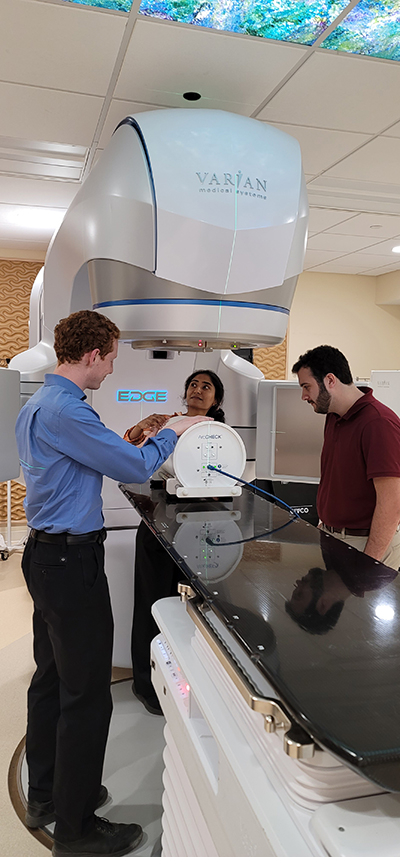
- You will be integrated into faculty laboratories and clinical facilities to work with faculty on a variety of research projects to advance disease diagnosis and treatment.
- Clinical laboratories and internships are available in therapeutic and diagnostic physics at the Purdue Life Science MRI facility, in radiology at Purdue’s College of Veterinary Medicine and at Memorial Medical Hospital and in radiation oncology at the Indiana University School of Medicine Hospital.
- Advanced coursework is offered in oncology, MRI theory and acquisition, magnetic resonance spectroscopy, PET/SPECT imaging and more.
Potential Careers
- Scientist in industries associated with radiological and radiation therapy equipment and support
- Scientist within state and federal government agencies
- Therapeutic medical physicist
- Diagnostic medical physicist
- Medical health physicist
Concentrations
You will work through the core medical physics courses and then follow one of two specialized tracks: therapeutic radiological physics or diagnostic (imaging) radiological physics
Program Quick Facts
Degree Type: Certificate, Master’s, Doctoral
Program Length : Certificate: 9 months (only students with prior PhD are eligible) Master’s: 2
PhD: 4-5 years entering with BS, 2-3 years entering with MS
Location : West Lafayette, IN
Department/School : School of Health Sciences
You will have the opportunity to work directly with medical physics faculty on interdisciplinary projects to advance understanding of image-guided and biology-based therapy; diagnostic imaging of cancer, neurological function and disease; and new uses of particle beams in detection and treatment.
- Ulrike Dydak
- Oluwaseyi (Seyi) Oderinde
- Matthew Scarpelli
- Aaron Specht
- Keith Stantz
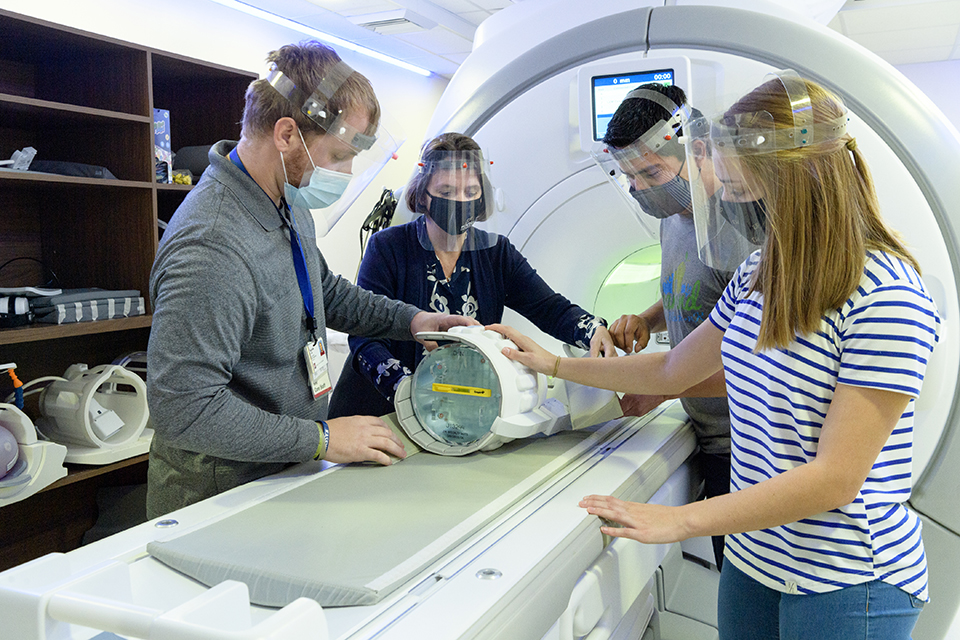
Research Opportunities
- MRI and MRS in diagnosis of neurotoxicity and radiation response
- Neutron and X-ray technologies for human body composition, disease diagnoses, and radiotherapy
- Imaging and tracer development in PET and SPECT
- Dynamic contrast enhanced imaging (CT, PCT) and thermoacoustic in image-guided therapy
- IMRT and normal tissue response to radiation therapy
Research Areas
- Health physics (radiation protection)
- Imaging sciences
- Medical physics
- Occupational and environmental health sciences (industrial hygiene, ergonomics)
Research Facilities
- Life Science MRI facility
- The Birck Nanotechnology Center
- The Bindley Bioscience Center
- The Regenstrief Center for Healthcare Engineering
- Purdue’s Center for the Environment
Admissions/Requirements
Applications submitted prior to January 10, 2023 will be considered for fellowships and awards .
Applicants to the MP program are expected to have an undergraduate degree in physics, engineering or comparable academic training, such as Purdue’s B.S. degree in Pre-Medical Physics. Minimum undergraduate coursework typically include:
- Analytic Geometry and Calculus (2 semester sequence), Multivariate Calculus and Differential Equations (1 semester)
- General Chemistry (2 semester sequence)
- Fundamentals of Biology (2 semester sequence)
- Human Anatomy and Physiology (2 semester sequence)
- Modern Mechanics, Electricity and Optics, Electricity and Optics Laboratory, Modern Physics, Modern Physics Lab, Intermediate Mechanics, and Quantum Mechanics
- Elementary Statistical Methods
Students that have not completed prior coursework in anatomy and physiology upon entry into the program are required to take a 2-semester sequence of anatomy and physiology (BIOL 301/302 or BIOL 203/204). Alternate plans of study are available for students that do not have the equivalent of a B.S. or minor in physics. Students with other deficiencies in their undergraduate curriculum may be accepted or conditionally accepted into the program at the discretion of Head of the School. Students accepted on a conditional basis may be required to take additional 100, 200, 300 or 400 level classes to address coursework deficiencies. A grade of B or better in all 100, 200, 300 or 400 level classes and a cumulative GPA of 3.0 or better at Purdue University is required for students accepted on a conditional basis. Upon completing the identified deficiencies, the Head of the School, in consultation with the RHS Program Director and GC Chair, re-evaluate the admission status of conditionally accepted students and either accept or deny admission into the MP graduate program. Conditionally accepted students that are ultimately denied admission into the MP program are counseled on possibly alternate degree paths at Purdue as well as alternative career paths.
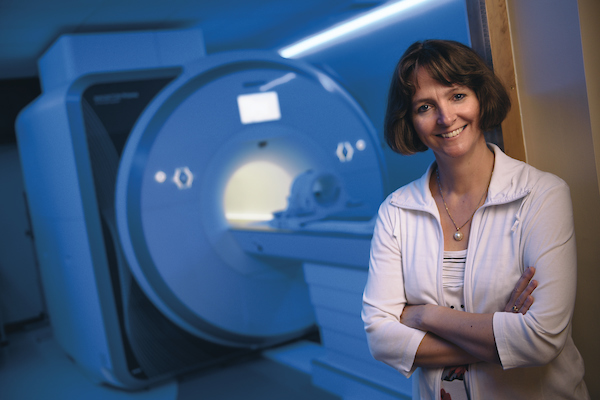
Ulrike Dydak | Program Director
For questions regarding the medical physics graduate program, please contact [email protected] or our graduate coordinator, Karen Walker, at [email protected] .
MEMP PhD Program
Hst’s memp phd program, is this program a good fit for me.
HST’s Medical Engineering and Medical Physics (MEMP) PhD program offers a unique curriculum for engineers and scientists who want to impact patient care by developing innovations to prevent, diagnose, and treat disease. We're committed to welcoming applicants from a wide range of communities, backgrounds, and experiences.
How is HST’s MEMP PhD program different from other PhD programs?
As a MEMP student, you’ll choose one of 11 technical concentrations and design an individualized curriculum to ground yourself in the foundations of that discipline. You’ll study medical sciences alongside MD students and become fluent in the language and culture of medicine through structured clinical experiences. You’ll select a research project from among laboratories at MIT, Harvard, affiliated hospitals and research institutes , then tackle important questions through the multiple lenses of your technical discipline and your medical training. As a result, you will learn how to ask better questions, identify promising research areas, and translate research findings into real-world medical practice.
What degree will I earn?
You’ll earn a PhD awarded by MIT or by the Harvard Faculty of Arts and Sciences.
What can I do with this degree?
Lead pioneering efforts that translate technical work into innovations that improve human health and shape the future of medicine.
How long will it take me to earn a PhD in HST’s MEMP program?
Similar to other PhD programs in MIT's School of Engineering, the average time-to-degree for MEMP PhD students is less than six years.
What are the degree requirements?
Science / engineering.
Choose one of the established concentration areas and select four courses from the approved list for the chosen area. Current MEMP concentration areas are:
- Aeronautics & Astronautics
- Biological Engineering
- Brain & Cognitive Sciences
- Chemical Engineering
- Computer Science
- Electrical Engineering
- Materials Science & Engineering
- Mechanical Engineering
- Nuclear Engineering
Harvard MEMPs fulfill Basic Science/Engineering Concentration and Qualifying Exam through their collaborating department (SEAS or Biophysics).
Biomedical Sciences and Clinical Requirements
Biomedical sciences core.
- HST030 or HST034: Human Pathology
- HST160: Genetics in Modern Medicine
- HST090: Cardiovascular Pathophysiology
Restricted Electives - two full courses required*
- HST010: Human Anatomy
- HST020: Musculoskeletal Pathophysiology*
- HST100: Respiratory Pathophysiology**
- HST110: Renal Pathophysiology**
- HST130: Introduction to Neuroscience
- HST162: Molecular Diagnostics and Bioinformatics*
- HST164: Principles of Biomedical Imaging*
- HST175: Cellular & Molecular Immunology
* May combine two half-courses to count as one full course **Must choose at least one of HST100, HST110
Clinical Core
- HST201: Intro. to Clinical Medicine I and HST202: Intro. to Clinical Medicine II
- HST207: Intro. to Clinical Medicine
PhD Thesis Guide
Letter of intent #1:.
Research advisor and topic. Due by April 30 of 2nd year.
Letter of Intent #2:
Tentative thesis committee. Due by April 30 of 3rd year.
Thesis proposal:
Defended before thesis committee. Due by April 30 of 4th year.
Final Thesis:
Public defense and submission of final thesis document.
Harvard MEMPs must an electronic copy of the final thesis including the signed cover sheet. Harvard MEMPs should not register for HST.ThG.
Qualifying Exam
TQE: Technical qualification based on performance in four concentration area courses and Pathology
OQE: Oral examination to evaluate ability to integrate information from diverse sources into a coherent research proposal and to defend that proposal
Professional Skills
Hst500: frontiers in (bio)medical engineering and physics.
Required spring of first year
HST590: Biomedical Engineering Seminar
Required fall semester of first year. Minimum of four semesters required; one on responsible conduct of research and three electives. Topics rotate.
Required for all MEMP students. (Biophysics students may substitute MedSci 300 for HST590 term on responsible conduct of research.)
Professional Perspectives
Required once during PhD enrollment
What can I expect?
You’ll begin by choosing a concentration in a classical discipline of engineering or physical science. During your first two years in HST, you’ll complete a series of courses to learn the fundamentals of your chosen area.
In parallel, you’ll become conversant in the biomedical sciences through preclinical coursework in pathology and pathophysiology, learning side-by-side with HST MD students.
With that foundation, you’ll engage in truly immersive clinical experiences, gaining a hands-on understanding of clinical care, medical decision-making, and the role of technology in medical practice. These experiences will help you become fluent in the language and culture of medicine and gain a first-hand understanding of the opportunities for — and constraints on — applying scientific and technological innovations in health care.
You’ll also take part in two seminar classes that help you to integrate science and engineering with medicine, while developing your professional skills. Then you’ll design an individualized professional perspectives experience that allows you to explore career paths in an area of your choice: academia, medicine, industry, entrepreneurship, or the public sector.
A two-stage qualifying examination tests your proficiency in your concentration area, your skill at integrating information from diverse sources into a coherent research proposal, and your ability to defend that research proposal in an oral presentation.
Finally, as the culmination of your training, you’ll investigate an important problem at the intersection of science, technology, and medicine through an individualized thesis research project, with opportunities to be mentored by faculty in laboratories at MIT, Harvard, and affiliated teaching hospitals.
Interested in applying? Learn about the application process here.

HST MEMP grad Grissel Cervantes-Jaramillo’s road to a PhD began in Cuba and wound through Florida
- Skip to Content
- Catalog Home
- Medical Physics, Ph.D.
One of the basic science departments of the UW–Madison School of Medicine and Public Health, the Department of Medical Physics offers comprehensive training in diagnostic and therapeutic medical physics and in health physics. Achievement of the Ph.D. degree in this department reflects strong scholarship and research skills in one of the top medical physics programs in North America. Graduates are prepared for teaching and/or research positions in universities, national laboratories, or in the medical and nuclear technology industries. Graduates are also prepared for admission into medical physics residency programs to become board eligible for clinical medical physics positions.
Medical physicists may participate professionally in the treatment of patients, in advanced medical imaging and diagnostic procedures, or in related areas of research and teaching. Health physicists may operate radiation protection programs at nuclear industrial facilities, hospitals, or laboratories, or may perform research on methods of measuring ionizing radiations (i.e., dosimetry).
A unique quality of the medical physics program is the broad range of expertise and research interests of the faculty. Students receive training in diagnostic x-ray physics, x-ray computerized tomography (CT), magnetic resonance imaging (MRI) and spectroscopy, nuclear medicine and positron emission tomography (PET) imaging, biomagnetism, medical ultrasound, elastography, radiation dosimetry, radiation treatment planning, and radiobiology.
The department also houses the Medical Radiation Research Center and the Accredited Dosimetry Calibration Laboratory, one of four in the US accredited by the American Association of Physicists in Medicine. In addition, the department provides clinical support services to the radiology and human oncology departments. It also operates a PET radiotracer production facility (with two cyclotrons available), a medical image analysis laboratory, and a small bore MRI scanner and photoacoustic ultrasound system in the Small Animal Imaging Facility. Each of these facilities provides unique training and support opportunities for graduate students. Access to state-of-the-art x-ray angiography, CT, MRI, and PET/CT and PET/MR systems is readily available.
The Ph.D. degree is primarily a research degree that extends the student's depth of knowledge in one of the specialty areas. Faculty positions at universities, research positions, and an increasing number of clinical physics positions require the Ph.D. degree. Medical physics faculty maintain close collaborative ties with faculty in other departments, including human oncology, radiology, cardiology, medicine, psychiatry, pharmacology, and biomedical engineering, broadening the scope of research opportunities open to medical physics students and providing access to sophisticated clinical facilities.
Please consult the table below for key information about this degree program’s admissions requirements. The program may have more detailed admissions requirements, which can be found below the table or on the program’s website.
Graduate admissions is a two-step process between academic programs and the Graduate School. Applicants must meet the minimum requirements of the Graduate School as well as the program(s). Once you have researched the graduate program(s) you are interested in, apply online .
About 80–90 applicants per year apply to the medical physics program. Each fall, the program admits 10–20 students. This results in an average enrollment of approximately 100 students each semester. Less than one-tenth of the students pursue the M.S. degree as a terminal degree, and the remainder continue on to the PhD.
A bachelor's degree in physics is considered the best preparation for graduate study in medical physics, but majors such as nuclear engineering, biomedical engineering, electrical engineering, or chemistry may also be acceptable. The student's math background should include calculus, differential equations, linear algebra, and Fourier analysis, such as might be learned in modern optics or undergraduate quantum theory. Some facility in computer programming and electronic instrumentation is desirable. One year of chemistry, a year of biology, and an introductory course in physiology are also advantageous.
Beginning graduate students should start their studies in the fall semester, as the course sequence is based on that assumption. Students applying for admission should submit an online application and all supporting documentation by December 1 to ensure consideration for admission and financial support to begin the following fall.
Admission to the graduate program is competitive. Applications are judged on the basis of a student's previous academic record, research experience, letters of recommendation, and personal statement of reasons for interest in graduate study in medical physics.
The application includes:
- The online application to the Graduate School
- Payment of the application fee
- Electronic copy of resume/CV (include awards, fellowships, and scholarships received, publications, volunteer activities, and research experience)
- Applicant data sheet
- Personal statement of reasons for interest in graduate study in medical physics. The personal statement should include your reasons for graduate study, why medical physics, your future career goals as it relates to a PhD (or MS) in medical physics and your area(s) of research interest. It is advantageous to also research and include the faculty member(s) with whom you would like to work. The personal statement should be no more than 3 pages, single-spaced, 11 point font or larger
- Transcripts from all academic institutions of study (scan and upload)
- Recommendation letters from people who can attest to your ability to be successful in the PhD program due to your experience, academics, etc.(submitted electronically through the online application)
Graduate School Resources
Resources to help you afford graduate study might include assistantships, fellowships, traineeships, and financial aid. Further funding information is available from the Graduate School. Be sure to check with your program for individual policies and restrictions related to funding.
Program Resources
The department typically supports 85–95 percent of students enrolled in the medical physics graduate program through department or university fellowships, research or teaching assistantships, or NIH NRSA training grant appointments. All awards include a comprehensive health insurance program and remission of tuition. The student is responsible for segregated fees.
Minimum Graduate School Requirements
Major requirements.
Review the Graduate School minimum academic progress and degree requirements , in addition to the program requirements listed below.
MODE OF INSTRUCTION
Mode of instruction definitions.
Accelerated: Accelerated programs are offered at a fast pace that condenses the time to completion. Students typically take enough credits aimed at completing the program in a year or two.
Evening/Weekend: Courses meet on the UW–Madison campus only in evenings and/or on weekends to accommodate typical business schedules. Students have the advantages of face-to-face courses with the flexibility to keep work and other life commitments.
Face-to-Face: Courses typically meet during weekdays on the UW-Madison Campus.
Hybrid: These programs combine face-to-face and online learning formats. Contact the program for more specific information.
Online: These programs are offered 100% online. Some programs may require an on-campus orientation or residency experience, but the courses will be facilitated in an online format.
CURRICULAR REQUIREMENTS
Required courses.
Students will take MED PHYS 900 Journal Club and Seminar four semesters for 1 credit each semester for a total of 4 credits.
Students may use one credit of MED PHYS 662 , MED PHYS 663 , MED PHYS 664 , MED PHYS 665 , or MED PHYS 666 .
MED PHYS 701 , MED PHYS 900 , and MED PHYS 990 do not count toward this requirement.
Health Physics Pathway 1
In addition to the above requirements, students completing the Health Physics emphasis must take the following courses:
An exemption from the Core Curriculum requirement requires the approval of the chair of the graduate committee. If the entirety of the Core Curriculum is not taken, the student will not satisfy the CAMPEP Core Curriculum requirement.
These pathways are internal to the program and represent different curricular paths a student can follow to earn this degree. Pathway names do not appear in the Graduate School admissions application, and they will not appear on the transcript.
Graduate School Policies
The Graduate School’s Academic Policies and Procedures provide essential information regarding general university policies. Program authority to set degree policies beyond the minimum required by the Graduate School lies with the degree program faculty. Policies set by the academic degree program can be found below.
Major-Specific Policies
Prior coursework, graduate work from other institutions.
With program approval, students are allowed to count no more than 12 credits of medical physics graduate coursework from other institutions. Coursework earned five years or more prior to admission to the doctoral degree program is not allowed to satisfy requirements.
UW–Madison Undergraduate
With program approval, 7 credits in medical physics courses from a UW–Madison undergraduate degree above the undergraduate graduation requirements are allowed to count toward the degree.
UW–Madison University Special
With program approval, students are allowed to count no more than 15 credits of coursework numbered 500 or above taken as a UW–Madison Special student. Coursework earned five years or more prior to admission to the doctoral degree program is not allowed to satisfy requirements.
For a graduate student in the Medical Physics Department who is a research assistant, fellow or trainee to be making satisfactory progress, they must:
- Obtain at least a 3.0 GPA in the most recent semester. Grades in all research courses and courses with grades of P, F, S or U are excluded from the average. A student who fails to make satisfactory progress will be dropped from the department. In exceptional cases, the chairperson may grant permission to continue for a specified probationary period.
- Maintain a minimum cumulative GPA of 3.0 for all courses taken while in the Medical Physics program and for all Department of Medical Physics courses. All research courses and all courses with grades of P, F, S or U are excluded from the average.
- Have taken the qualifier examination by the end of the 2nd semester of study. If a basic (low level) pass is not obtained on the first attempt, the second (and last) attempt to pass the qualifier examination must be made no later than the 4th semester.
Any student, who fails to meet the requirements of 1-3 above, will be placed on probation. Failure in the first semester of probation to obtain a 3.0 average for the semester and a cumulative GPA of at least 3.0 will result in termination unless the student's advisor requests and the department and the Graduate School approves, continued enrollment. The particular courses which count toward the GPA in any probation semester must be approved in writing by the student's advisor and the Medical Physics Graduate Committee Chairman in order for the work to count toward returning the student to good standing.
ADVISOR / COMMITTEE
Candidates must acquire a major professor/advisor by the beginning of the second semester of study.
CREDITS PER TERM ALLOWED
Time limits.
The oral PhD qualifying examination should be taken by the end of the 4th semester, and the PhD preliminary examination should be taken by the end of the third year of study. Permission of the graduate committee is required if the PhD preliminary examination must be taken after the end of the third year. Defense of a dissertation is required within five years of successful completion of the PhD preliminary examination.
This program follows the Graduate School's Time Limits policy .
Grievances and Appeals
These resources may be helpful in addressing your concerns:
- Bias or Hate Reporting
- Graduate Assistantship Policies and Procedures
- Office of the Provost for Faculty and Staff Affairs
- Dean of Students Office (for all students to seek grievance assistance and support)
- Employee Assistance (for personal counseling and workplace consultation around communication and conflict involving graduate assistants and other employees, post-doctoral students, faculty and staff)
- Employee Disability Resource Office (for qualified employees or applicants with disabilities to have equal employment opportunities)
- Graduate School (for informal advice at any level of review and for official appeals of program/departmental or school/college grievance decisions)
- Office of Compliance (for class harassment and discrimination, including sexual harassment and sexual violence)
- Office of Student Conduct and Community Standards (for conflicts involving students)
- Ombuds Office for Faculty and Staff (for employed graduate students and post-docs, as well as faculty and staff)
- Title IX (for concerns about discrimination)
Grievance Policy for Graduate Programs in the School of Medicine and Public Health
Any student in a School of Medicine and Public Health graduate program who feels that they have been treated unfairly in regards to educational decisions and/or outcomes or issues specific to the graduate program, including academic standing, progress to degree, professional activities, appropriate advising, and a program’s community standards by a faculty member, staff member, postdoc, or student has the right to complain about the treatment and to receive a prompt hearing of the grievance following these grievance procedures. Any student who discusses, inquiries about, or participates in the grievance procedure may do so openly and shall not be subject to intimidation, discipline, or retaliation because of such activity. Each program’s grievance advisor is listed on the “Research” tab of the SMPH intranet .
This policy does not apply to employment-related issues for Graduate Assistants in TA, PA and/or RA appointments. Graduate Assistants will utilize the Graduate Assistantship Policies and Procedures (GAPP) grievance process to resolve employment-related issues.
This policy does not apply to instances when a graduate student wishes to report research misconduct. For such reports refer to the UW-Madison Policy for Reporting Research Misconduct for Graduate Students and Postdoctoral Research Associates .
Requirements for Programs
The School of Medicine and Public Health Office of Basic Research, Biotechnology and Graduate Studies requires that each graduate program designate a grievance advisor, who should be a tenured faculty member, and will request the name of the grievance advisor annually. The program director will serve as the alternate grievance advisor in the event that the grievance advisor is named in the grievance. The program must notify students of the grievance advisor, including posting the grievance advisor’s name on the program’s Guide page and handbook.
The grievance advisor or program director may be approached for possible grievances of all types. They will spearhead the grievance response process described below for issues specific to the graduate program, including but not limited to academic standing, progress to degree, professional activities, appropriate advising, and a program’s community standards. They will ensure students are advised on reporting procedures for other types of possible grievances and are supported throughout the reporting process. Resources on identifying and reporting other issues have been compiled by the Graduate School.
- The student is advised to initiate a written record containing dates, times, persons, and description of activities, and to update this record while completing the procedures described below.
- If the student is comfortable doing so, efforts should be made to resolve complaints informally between individuals before pursuing a formal grievance.
- Should a satisfactory resolution not be achieved, the student should contact the program’s grievance advisor or program director to discuss the complaint. The student may approach the grievance advisor or program director alone or with a UW-Madison faculty or staff member. The grievance advisor or program director should keep a record of contacts with regards to possible grievances. The first attempt is to help the student informally address the complaint prior to pursuing a formal grievance. The student is also encouraged to talk with their faculty advisor regarding concerns or difficulties.
- If the issue is not resolved to the student’s satisfaction, the student may submit a formal grievance to the grievance advisor or program director in writing, within 60 calendar days from the date the grievant first became aware of, or should have become aware of with the exercise of reasonable diligence, the cause of the grievance. To the fullest extent possible, a grievance shall contain a clear and concise statement of the grievance and indicate the issue(s) involved, the relief sought, the date(s) the incident or violation took place, and any specific policy involved.
- The grievance advisor or program director will convene a faculty committee composed of at least three members to manage the grievance. Any faculty member involved in the grievance or who feels that they cannot be impartial may not participate in the committee. Committee composition should reflect diverse viewpoints within the program.
- The faculty committee, through the grievance advisor or program director, will obtain a written response from the person or persons toward whom the grievance is directed. The grievance advisor or program director will inform this person that their response will be shared with the student filing the grievance.
- The grievance advisor or program director will share the response with the student filing the grievance.
- The faculty committee will make a decision regarding the grievance. The committee’s review shall be fair, impartial, and timely. The grievance advisor or program director will report on the action taken by the committee in writing to both the student and the person toward whom the grievance was directed.
- The grievant will be notified in writing, within 5 business days of the written appeal, acknowledging receipt of the formal appeal and establishing a timeline for the review to be completed.
- The senior associate dean or their designee may request additional materials and/or arrange meetings with the grievant and/or others. If meetings occur, the senior associate dean or their designee will meet with both the grievant and the person or persons toward whom the grievance is directed.
- The senior associate dean or their designee will assemble an ad hoc committee of faculty from outside of the student’s graduate program and ask them to prepare a written recommendation on whether to uphold or reverse the decision of the program on the student’s initial grievance. The committee may request additional materials and/or arrange meetings with the grievant and/or others. If meetings occur, the committee will meet with both the grievant and the person or persons toward whom the grievance is directed.
- The senior associate dean or their designee will make a final decision within 20 business days of receipt of the committee’s recommendation.
- The SMPH Office of Basic Research, Biotechnology, and Graduate Studies must store documentation of the grievance for seven years. Grievances that set a precedent may be stored indefinitely.
- The student may file an appeal of the School of Medicine and Public Health decision with the Graduate School. See the Grievances and Appeals section of the Graduate School’s Academic Policies and Procedures .
Time Limits
Steps in the grievance procedures must be initiated and completed within the designated time periods except when modified by mutual consent. If the student fails to initiate the next step in the grievance procedure within the designated time period, the grievance will be considered resolved by the decision at the last completed step.
Most students are funded with research assistantships through the research programs of their advisors. A limited number of traineeships are available to advanced students in the UW Radiological Sciences Training Program for career training in cancer research. Other fellowships are also available to qualified students (e.g., AAPM, Cardiovascular and Neurological Sciences Training Programs, Advanced Opportunity Fellowship Program).
Take advantage of the Graduate School's professional development resources to build skills, thrive academically, and launch your career.
- Articulates research problems, potentials, and limits with respect to theory, knowledge, or practice within the field of medical physics.
- Formulates ideas, concepts, designs, and/or techniques beyond the current boundaries of knowledge within the field of medical physics.
- Creates research, scholarship, or performance that makes a substantive scientific contribution.
- Demonstrates breadth and depth within their learning experiences.
- Advances contributions of the field of medical physics to society through peer-reviewed journal publications.
- Communicates complex ideas in a clear and understandable manner in both oral and written formats.
- Demonstrates ethical research and professional conduct.
Faculty: Please see a comprehensive list of our faculty on the department website.
- Accreditation
Commission on Accreditation of Medical Physics Education Programs
Accreditation status: Accredited through December 31, 2026. Next accreditation review: Spring 2026.
- Requirements
- Professional Development
- Learning Outcomes
Contact Information
Medical Physics School of Medicine and Public Health Medical Physics, Ph.D. https://www.medphysics.wisc.edu
Graduate Program Coordinator [email protected] 608-265-6504 1005 Wisconsin Institutes for Medical Research (WIMR), 1111 Highland Avenue, Madison, WI 53705-2275
Tomy Varghese, Director of Graduate Studies [email protected]
Grievance Advisor, Wesley Culberson, Associate Professor [email protected]
Graduate Program Handbook View Here
Graduate School grad.wisc.edu
- /pdf/
- Explore Graduate Opportunities
- Explore UW-Madison's Undergraduate Opportunities
- Accounting and Information Systems
- African American Studies
- African Cultural Studies
- Agricultural and Applied Economics
- Agricultural and Life Sciences - College-Wide
- Animal and Dairy Sciences
- Anthropology
- Art History
- Asian Languages and Cultures
- Atmospheric and Oceanic Sciences
- Bacteriology
- Biochemistry
- Biological Systems Engineering
- Biomedical Engineering
- Biostatistics and Medical Informatics
- Business - School-Wide
- Cell and Regenerative Biology
- Chemical and Biological Engineering
- Chicana/o and Latina/o Studies
- Civil and Environmental Engineering
- Civil Society & Community Studies
- Classical and Ancient Near Eastern Studies
- Communication Arts
- Communication Sciences and Disorders
- Community and Environmental Sociology
- Computer Sciences
- Counseling Psychology
- Curriculum and Instruction
- Educational Leadership and Policy Analysis
- Educational Policy Studies
- Educational Psychology
- Electrical and Computer Engineering
- Engineering - College-Wide
- Food Science
- Forest and Wildlife Ecology
- French and Italian
- Gaylord Nelson Institute for Environmental Studies
- Gender and Women's Studies
- German, Nordic, and Slavic
- Graduate - School-Wide
- Horticulture
- Human Ecology - School-Wide
- Industrial and Systems Engineering
- Information School
- Institute for Clinical and Translational Research
- Institute for Regional and International Studies
- Integrative Biology
- Journalism and Mass Communication
- Kinesiology
- La Follette School of Public Affairs
- Language Institute
- Language Sciences
- Law - School-Wide
- Life Sciences Communication
- Management and Human Resources
- Materials Science and Engineering
- Mathematics
- Mead Witter School of Music
- Mechanical Engineering
- Medical Physics, M.S.
- Medicine and Public Health - School-Wide
- Nuclear Engineering and Engineering Physics
- Nursing - School-Wide
- Nutritional Sciences
- Operations and Information Management
- Pharmacy - School-Wide
- Planning and Landscape Architecture
- Plant Pathology
- Political Science
- Population Health Sciences
- Real Estate and Urban Land Economics
- Rehabilitation Psychology and Special Education
- Religious Studies
- Risk and Insurance
- Sandra Rosenbaum School of Social Work
- Soil Science
- Spanish and Portuguese
- Veterinary Medicine - School-Wide
- Nondegree/Visiting Student Guide
- Pharmacy Guide
- School of Medicine and Public Health Guide
- Undergraduate Guide
- Veterinary Guide
Wayne State University
School of medicine, medical physics medical physics, ph.d. in medical physics.
GENERAL INFO
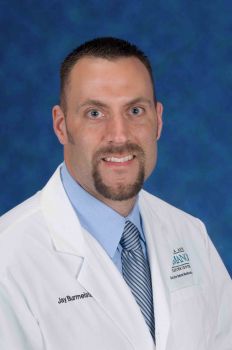
Jay Burmeister, PhD, DABR, FAAPM Director, Medical Physics Graduate Program Wayne State University School of Medicine
The curriculum consists of 60 post baccalaureate graduate course credits, including the required courses, with at least 30 credits at the 7000 level and above. Students must successfully complete the Qualifying Examination and an Oral Exam. After qualifying, 30 research and dissertation credits must be taken, including oral dissertation defense. Thus, the entire program consists of 90 graduate credits. It is essential that the PhD Dissertation represent original research work which must be presented at a Public Defense lecture. Also, all students will be encouraged to complete a (non-credit) Clinical Internship.
The PhD program in Medical Physics is designed to train graduate students with a background in Physics, Engineering, or related science to become medical physicists practicing in research and clinical service in Radiation Oncology, Diagnostic Imaging, and/or Nuclear Medicine. Our objectives are to remain one of the top medical physics educational programs in North America, to produce leaders and innovators in the advancement of the technical aspects of medical care, and to place our graduates in high quality research and clinical positions in the academic and health care professions. In doing so, our ultimate goal is to improve the quality of health care in Radiation Oncology, Diagnostic Imaging, and/or Nuclear Medicine.
PREREQUISITES
In addition to the prerequisites for the Master's program :
- Graduate Record Examination: Subject Test in Physics (recommended).
REQUIRED COURSEWORK
All the required M.S. courses , (with the exception of ROC 7999) plus:
plus additional didactic coursework to meet requirements (some electives listed below):
SAMPLE ELECTIVE COURSES
PH.D. QUALIFYING EXAM
The PhD Qualifying Examination is usually taken by students after completion of all the required courses and is one of the requirements which must be successfully completed before being admitted to candidacy for the degree. The examination is in two parts, both written. Before taking the exam the student must have filed a Plan of Work with the Graduate School. The written exam consists of a four-hour (Part I) Radiological Physics Exam based on the Canadian College of Physicists in Medicine (Board) Exam, followed by a four-hour (Part II) exam on problem solving in Medical Physics based upon the required ROC courses within the program. The passing requirements are the same for both the Part I and Part II exams. The examinee must achieve an average score of 70% for each exam, and must score at least 50% on all questions.
All questions for the Part I exam are selected from a bank of about 100 questions assembled into six topic groups. The exam consists of six questions, one question from each group being selected randomly for each exam. Candidates must answer four of the six questions. Copies of the Question Booklet are provided to all Ph.D. students by the Program Director. For the Part II Exam, questions are divided into three sections: (1) Diagnostic Imaging & Nuclear Medicine, (2) Radiation Oncology Physics, and (3) Radiological Physics, Radiation Dosimetry, Radiation Safety, and Radiobiology. The examinee will receive two questions in each section. Candidates must answer four of the six questions, with at least one question selected from each of the three sections.
Students register for the Qualifying Exam with the Program Director at least two months before the Part I exam.
For the Oral Examination, the student is expected to review a potential research program and is required to demonstrate an adequate command of knowledge of the field of study, with the ability to organize and apply that knowledge toward completion of the proposed research. The Oral Exam will normally be administered after the candidate has successfully completed the Qualifying Exam, but no more than one year after, and is just beginning to work on a potential dissertation research project. It will consist of a public seminar followed by a closed dissertation committee meeting. All PhD students will meet with their respective committees, at a minimum, once per year. Additional meetings will be scheduled as needed.
CLINICAL INTERNSHIP PROGRAM
The purpose of the clinical internship is to provide practical experience so that graduates will be immediately useful upon employment. Interns will gain clinical experience under the direction of program faculty at the Karmanos Cancer Center, along with potentially other area facilities. An internship covering IMRT quality assurance will also be offered through Karmanos Cancer Center. Arrangements will be made during the fall term. Additional clinical opportunities may be secured by the individual students through faculty mentors.
TRANSFER OF CREDIT
Up to 30 credits may be transferred in from another accredited university to meet the didactic requirements of the PhD degree.
Division of Radiation Oncology
4201 St. Antoine Boulevard, 1D-UHC Detroit, MI 48201
Privacy and University Policies
Wayne State University © 2023
- Accessibility Options:
- Skip to Content
- Skip to Search
- Skip to footer
- Office of Disability Services
- Request Assistance
- 305-284-2374
- High Contrast
- School of Architecture
- College of Arts and Sciences
- Miami Herbert Business School
- School of Communication
- School of Education and Human Development
- College of Engineering
- School of Law
- Rosenstiel School of Marine, Atmospheric, and Earth Science
- Miller School of Medicine
- Frost School of Music
- School of Nursing and Health Studies
- The Graduate School
- Division of Continuing and International Education
- People Search
- Class Search
- IT Help and Support
- Privacy Statement
- Student Life

- Search Site
- Main College
- College News
Biomedical Engineering
- Chemical, Environmental and Materials Engineering
- Civil and Architectural Engineering
- Electrical and Computing Engineering
- Industrial Engineering
- Mechanical and Aerospace Engineering
- What is BME?
- Mission Statement
- Educational Objectives
- Undergraduate
- Imaging, Optics, & Lasers
- Biomechanics, Microfluidics, Biomaterials and Tissue
- Neural Engineering, Signals, & Instrumentation
- News and Events
- Advisory Board
- PhD Students
- History and Current Enrollment
- MS in Medical Physics
- PhD in Medical Physics
- Certificate Program
- Student Publications
- Listening Exercise
- Communications
The PhD in Biomedical Engineering – Medical Physics Program focuses on training students’ research ability and experience in the field of medical physics with an emphasis on radiation therapy, in addition to the course work required by the MS in Biomedical Engineering – Medical Physics Program. Students graduating from the program are required to take the American Board of Radiology (ABR) exam and to apply for medical physics residency programs. Students are encouraged to seek academic positions after graduating from the program.
Students will complete most of the coursework in the Department of Biomedical Engineering and will join research projects in the Department of Radiation Oncology, or other collaborative departments or clinical sites. PhD students in the program will take two qualify exams. The first one is the general qualify exam required by the Department of Biomedical Engineering, usually after two-semester study and before the third semester starts. The second qualify exam is required by the Medical Physics Graduate Program, usually after all coursework has been completed.
The Medical Physics curriculum is designed to provide students with the technical and intellectual skills required for successful careers in the field of medical physics. In addition to the coursework required by the Biomedical Engineering PhD program, PhD students enrolled in the medical physics program must successfully complete 32 medical physics course credits, at least 12 credits in research dissertation (BME 830/840) in the field of medical physics, and other requirements by the BME PhD program.

- 1251 Memorial Drive McArthur Engineering Building Coral Gables , FL 33146
- 305-284-2445 305-284-2445
- Academic Calendar
- Alumni & Friends
- Medical Center
- Hurricane Sports
- Parking & Transportation
- social-facebook
- social-twitter
- social-youtube
- social-instagram
Copyright: 2024 University of Miami. All Rights Reserved. Emergency Information Privacy Statement & Legal Notices
Individuals with disabilities who experience any technology-based barriers accessing the University’s websites or services can visit the Office of Workplace Equity and Inclusion .
Medical Physics, MS
School of medicine.
The program is designed for full-time students who wish to pursue a career as a medical physicist either as a researcher, as a certified clinical profession, or in industry. The program will require successful completion of a minimum of 38 credits for Master’s degree and completion of a research thesis (in conjunction with one or more of the faculty). Full-time master’s students will complete the program in two years.
Admission Requirements
- B.S. degree or B.A. degree in physics, applied physics, or one of the physical sciences, including physics training at least equivalent to a minor
- Official transcript of school record, personal statement, three letters of recommendation, and curriculum vitae
- Demonstrated proficiency in written and spoken English (TOEFL/IELTS required for non-native English speakers)
- General GRE exam scores are required (physics GRE is recommended)
For more information on graduate education at the Johns Hopkins University School of Medicine, see: Johns Hopkins University School of Medicine Graduate Programs
Contact Information
Inquiries may be directed to [email protected] .
Program Requirements
This program consists of 38 credits (cr). There is also a research ethics and responsible conduct of research requirement.
Core Medical Physics Courses (20 Cr)
All Medical Physics students are required to take the following courses:
- ME.420.702 Radiological Physics and Dosimetry fall Yr 1
- ME.420.703 Radiation Therapy Physics spring Yr 1
- ME.420.704 spring Yr 1
- ME.420.705 Medical Physics Seminar must be taken first three semesters, but only 1 credit can be counted toward degree requirement
- ME.420.706 Radiation Biology fall Yr 2
- ME.420.710 Medical Imaging Systems fall Yr 1
- PH.183.631 Fundamentals of Human Physiology (4 cr) fall Yr 1 - Public Health crs
- Professionalism and Ethics (0 cr) fall Yr 1
- Responsible Conduct of Research (0 cr)* fall and spring Yr 1
*University requirement for graduation; no credit
OTHER REQUIRED COURSES (6 cr)
All MP students are required to take the following additional courses.
- ME.420.707 Nuclear Medicine Imaging fall Yr 2
- ME.420.709 Radiopharmaceutical Therapy spring Yr 2
Research Project (6 Cr)
Students are required to take at least 6 cr of independent research project or master's thesis research.
Elective Courses (6 Cr)
Students shall take 6 (or more) additional credit hours from the following list of courses or other courses as approved by the Program Director.
SOM Medical Physics (EB campus)
- ME.420.xxx Advanced Image Reconstruction (3 cr)
- ME.420.xxx Quantitative Imaging Analysis (3 cr)
- ME 420.xxx Molecular Imaging (3 cr)
PH Biostatistics (EB campus)
- PH.140.615 Statistics for Laboratory Scientists I (4 cr)
Biomedical Engineering (Homewood campus)
- EN.580.640 Systems Pharmacology and Personalized Medicine (4 cr)
- EN.580.674 Introduction to Neuro-Image Processing (3 cr)
- EN.580.679 Principles and Applications of Modern X-ray Imaging and Computed Tomography (3 cr)
- EN.580.693 Imaging Instrumentation (4 cr)
Electrical and Computer Engineering (Homewood campus)
- EN.520.623 Medical Image Analysis (3 cr)
- EN.520.631 Ultrasound and Photoacoustic Beamforming (3 cr)
- EN.520.659 Machine learning for medical applications (3 cr)
Department of Radiation Oncology
Medical School
- Department History
- Radiation Oncology Residents
- Evaluation of Curricula
- Sample Academic Plans
- Program Faculty
- Alumni Spotlight
- New Student Orientation
- Student Progress Evaluation
- Application Process
- Benefits & Stipends
- Current Medical Residents
- Radiation Physics and Radiobiology Courses
- Well-Being & Professional Development
- Life in Minnesota
- Resident News & Kudos
- Current Medical Physics Residents
- Brachytherapy Research Lab
- Brain Tumor Translational Research Lab
- Molecular Cancer Therapeutics Lab
- Radiobiology Lab
- Patient Care
- Radiation Oncology Anniversary
Medical Physics Graduate Program
The Medical Physics Graduate Program is accredited by the Commission on Accreditation of Medical Physics Education Programs (CAMPEP) and offers MS and PhD degrees.
The goal of the program is to prepare students for entering a clinical medical physics residency program in therapy or imaging physics and/or to pursue a career in research and teaching in radiation therapy, radiology, or magnetic resonance imaging.
The program meets the requirements of the Graduate School of the University of Minnesota, AAPM Reports 197, 197S, and the CAMPEP Standards for Accreditation of Graduate Educational Programs.
The Medical Physics Graduate Program generally admits students in the Fall semester. This program does not grant conditional admissions. Deadline for Fall 2025 admissions will be January 5, 2025.
+ What is Medical Physics?
Medical physicists are professionals with education and specialist training in the concepts and techniques of applying physics in medicine. Medical Physicists work in clinical, academic or research institutions. (Source: IOMP)
Medical physicists are concerned with three areas of activity:
- Clinical service and consultation in radiation oncology and radiology departments
- Research and development in areas such as cancer, heart disease, and others
- Teaching medical physics students, resident physicians, and radiology and radiation therapy technology students
(Source: AAPM)
AAPM's public education web page describing medical physics:
https://www.medicalradiationinfo.org/medical-physics/
AAPM's public education web page describing a career in medical physics:
https://www.medicalradiationinfo.org/careers/

+ Program Governance
The program governance includes the Director of Graduate Studies (DGS), the Steering Committee, and the Admissions Committee. The Steering Committee addresses the long term needs of the program and any short term issues. The Admissions Committee reviews applications for admissions and makes admissions decisions.
The majority of the instructors for the program are from the Departments of Radiation Oncology and Radiology at the University of Minnesota. Faculty are listed as full if they advise and support student(s) in the program at least once every five years, actively participate in the program by serving on student(s) MS and PhD committees, teaching courses, or serve in one of the graduate program committees.
+ Facilities
The facilities and clinical equipment of the University of Minnesota Medical Center are available to the faculty and students of the graduate program in Medical Physics. These include departments of Radiation Oncology and Radiology, including The Center for Magnetic Resonance Research .
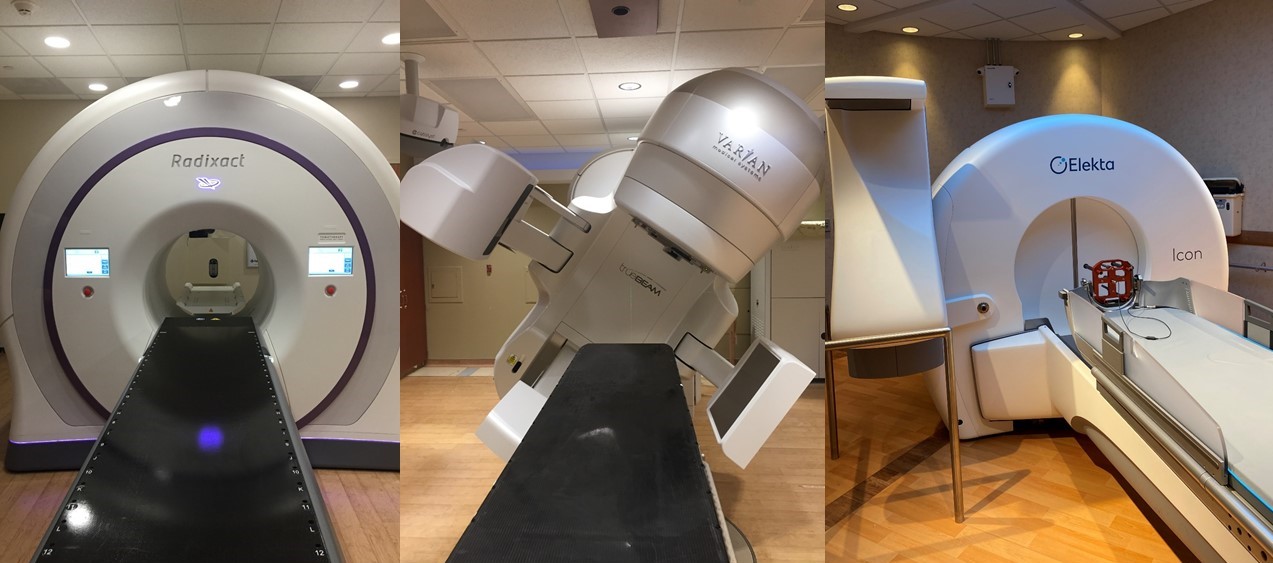
Additional facilties within various University of Minnesota departments and centers are also available to graduate students as needed.
The full resources of the University of Minnesota Library systems both online and its physical holdings are available to all graduate students of the University of Minnesota. Other materials not directly accessible within the University of Minnesota Library system can be acquired via interlibrary loan.
Read a general description of the University of Minnesota Libraries .
Read about particular library services offered to graduate students.
+ Active Research Projects
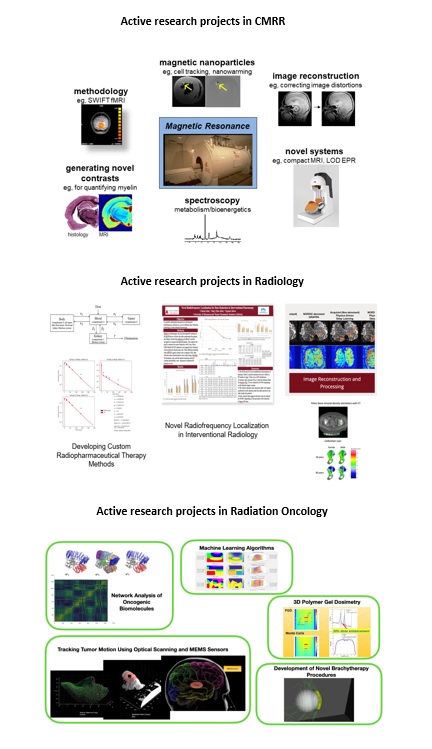
+ Recent Student Publications and Presentations
Aapm 2023 presentations:, ismrm 2023 presentations:, other presentations:, + graduate outcomes.
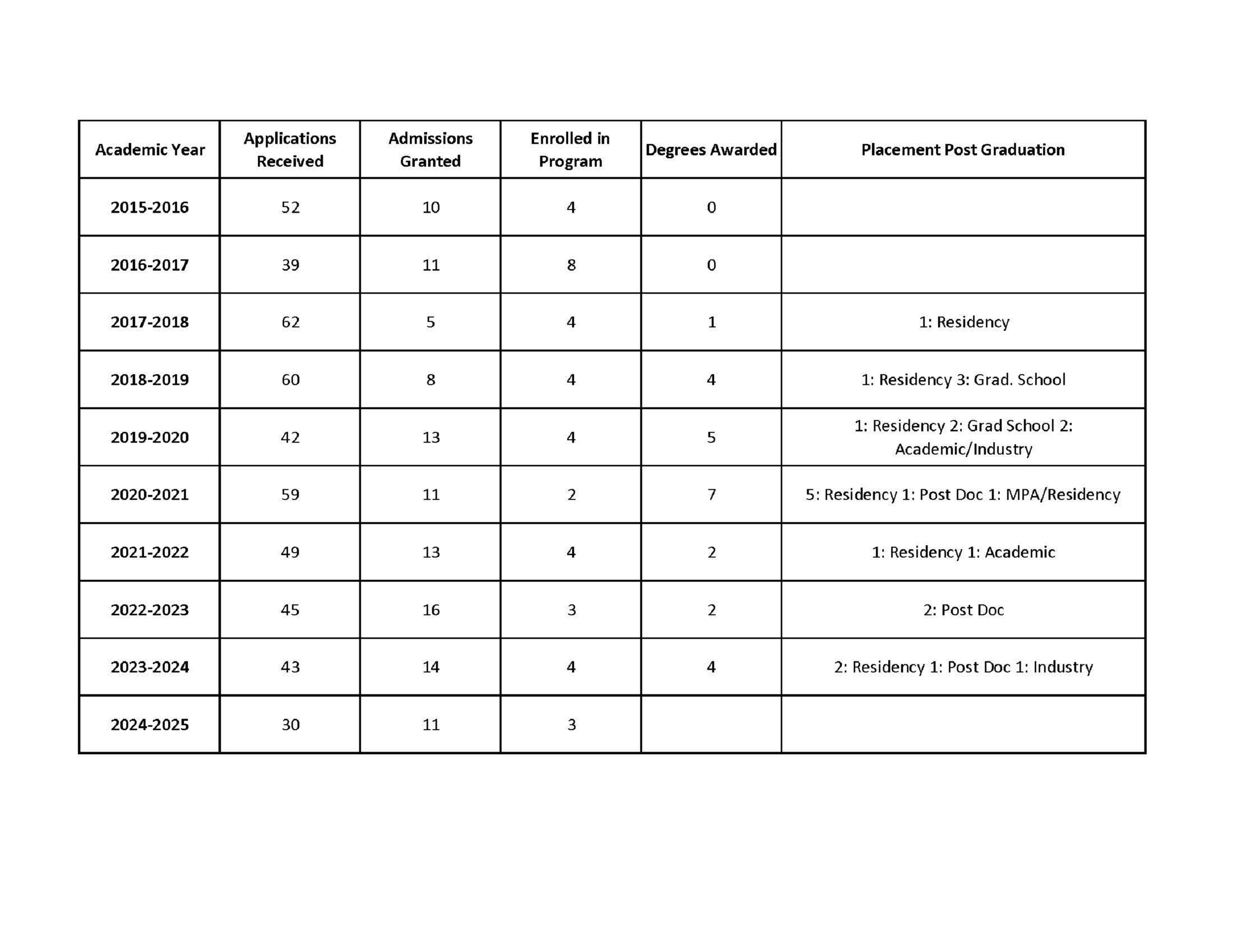
Program History
This graduate program was started as an interdisciplinary graduate program under the name Biophysical Sciences in the 1950s by Dr. Otto Schmidt to encourage collaboration among biologists, chemists, and physicists. Then, as now, faculty had their salaried appointments in various home departments, including departments within the Medical School, but participated in Biophysical Sciences because of their interests in collaborative, interdisciplinary projects.
- 1960 - 1970
- 1980 - 1990
- 2000 - Present
By the late 1960s and early 1970s, disciplines such as biophysics, biochemistry, physical chemistry, etc. were established in the mainstream, so the emphasis in Biophysical Sciences shifted to health informatics (integration of computers for modeling and data base analysis) and medical applications of biochemistry with Dr. Gene Ackerman and Dr. Russell K. Hobbie as Directors of Graduate Studies.
By the late 1980s the computerization of all disciplines had become routine and most of the faculty had minimized their participation in the Biophysical Sciences Program. At about that time, however, a resurgence of interest in applications of various disciplines to problems in “radiologic sciences” – medical imaging, radiation therapy, and radiobiology – resulted in a renewal of interest in the program. In the US, the field of radiologic science is known as a profession by the term “Medical Physics”. Thus, by the early 1990’s the emphasis of the program had shifted to Medical Physics. In 1993, the program underwent an internal review under the direction of Associate Dean Kenneth Zimmerman at the request of Vice President and Dean Anne Petersen. The purpose of the review was to explore the future of involvement of the Medical School in the program. E. Russell Ritenour, became Director of Graduate Studies at that time.
In 2012, the name of the Biophysical Sciences and Medical Physics program was changed to Medical Physics to more closely align the name of the program with the focus of the majority of the students in the program. The program as it currently stands focuses on Medical Physics but does not preclude the student from having a graduate project that is outside the traditional borders of Medical Physics. This is due to the fact that there are several professors associated with the program that have interests aligned with Medical Physics that are not purely clinical in focus. To aid in this transition of the program and to promote the accreditation process, Bruce J. Gerbi, PhD was installed as the Program Director. Upon retirement of Dr. Gerbi, Parham Alaei, PhD was elected as program director in May 2017.
Education & Training
- Curriculum & Courses
- Medical Residency Program
- Medical Physics Residency Program
For specific program information, please contact:
Parham Alaei, PhD, Professor University of Minnesota Medical School Department of Radiation Oncology 612-626-6505 [email protected] Mayo Mail Code 494 420 Delaware Street SE Minneapolis, Minnesota 55455
For general program information, please contact:
- Current Students
UTHealth - Houston's Health University
Uthealth - graduate school of biomedical sciences.
- Why the GSBS
- Our Location
- Information Technology
- Digital Classroom
- Campus Safety
- Classroom Calendar
- Administered by MD Anderson and UTHealth Houston
- Located in The Texas Medical Center (TMC), the world's largest medical center
- Accredited by the Southern Association of Colleges and School Commission on Colleges (SACSCOC)
- Over 600 faculty members with expertise in the latest biomedical research
- Genetic Counseling
- Medical Physics
- Milestone Requirements
- Faculty Seeking MS Students

Explore GSBS Labs
- Cancer Biology
- Genetics & Epigenetics
- Microbiology & Infectious Diseases
- Molecular & Translational Biology
- Neuroscience
- Quantitative Sciences
- Therapeutics & Pharmacology
Research Interests
- Program Directory
- Faculty Seeking PhD Students

- Message From the Director
- MD Anderson Cancer Center UTHealth Graduate School of Biomedical Sciences
- McGovern Medical School
- MD Anderson Cancer Center
- Center for Clinical Translational Sciences

Student Research Day 2020
- Admissions Overview
- Requirements & Instructions
- Financial Assistance
- Recruitment Schedule
- What factors are considered in admissions decisions?
- What is the minimum GPA required to apply?
- Do you require interviews?
- When will I be notified regarding interviews?
- What are the application deadlines?
- What if my recommender does not have an institutional letterhead or an institutional email address?
- How can I get an assistantship?
- How can I get an assistantship if I am seeking a MS degree?

Admissions Office
6767 Bertner Avenue S3.8344 Mitchell BSRB Houston TX 77030
- Summer Undergraduate Research Programs
- Biochemistry
- Bioinformatics
- Cell Biology
- Developmental Biology
- Epigenetics
- Infectious Diseases
- Microbiology
- Pharmacology
- Therapeutics
- Translational Research
- Discover Houston
- Explore Campus
- Career Development
- Parking, Transportation, Disability, Worklife, More
- Student Support
- Graduate Student Association
- Association of Minority Biomedical Researchers
- Association of Science Communication
- Community Outreach
- First Generation Student Group
- International Student Association
- LGBTQ+ Student Alliance
- Student InterCouncil

About the GSBS
Quick facts, thesis based ms programs, specialized ms, individualized ms program in biomedical sciences, phd programs, md/phd program, participating institutions/entities.

Admission FAQs
- Biostatistics
- Infectious Disease
Student Life
Student organizations.
nav = Medical Physics
GSBS Medical Physics Program
The Medical Physics Graduate Program
Medical physics is a profession that combines principles of physics and engineering with those of biology and medicine to effect better diagnosis and treatment of human disease while ensuring the safety of the public, our patients and those caring for them.
The Medical Physics Graduate Program offers the Specialized Master of Science degree and the Master of Science and Doctor of Philosophy degrees through the MD Anderson Cancer Center UTHealth Houston Graduate School of Biomedical Sciences. Two UT components, UTHealth Houston and MD Anderson, jointly support the program, with the majority of faculty and students, as well as the program administration, working at MD Anderson.
The S.M.S. degree is a professional master's degree that prepares the student for clinical practice as a medical physicist. The Ph.D. degree is intended for the student who is preparing for a career that includes a strong research component. The two degree tracks have similar didactic curricula, but the S.M.S. research project is typically more clinically focused and shorter in duration than the research work for the M.S. and Ph.D. degrees.
In addition to the SMS and PhD degree programs in Medical Physics, the GSBS offers a Graduate Certificate in Medical Physics. The certificate program is intended for those who already have a PhD in physics or a related discipline and are interested in obtaining the didactic education in medical physics that is required by residency programs and by the American Board of Radiology. Some of the requirements for admission to this program are a PhD in physics or else a PhD in a related discipline plus at least a minor in physics and medical physics research experience at The University of Texas MD Anderson or UTHealth Houston.
Photo (Right): Functional MRI (fMRI) and diffusion tensor imaging (DTI) tractography for presurgical evaluation of brain tumor resection (image courtesy of Anthony Liu, PhD)

Medical Physics Program Resources
How to apply.
Students who wish to study medical physics should apply online through the GSBS website
When your application is complete (including all of the required documentation such as transcripts and letters of reference), the GSBS will forward it to the program admission committee for consideration. Strict adherence to the deadlines is advised.
If you are applying to the Specialized Master of Science Program ("SMS"), which is our professionally oriented terminal master’s degree, select "M.S." as the Degree Plan. If you are applying to the M.S./Ph.D. program, select "Ph.D." as the Degree Plan, even if you expect to earn the M.S. degree on the way to the Ph.D. Most of our Ph.D. students take advantage of the opportunities that the Graduate School offers to by-pass the master’s degree en route to the Ph.D.
Under Areas of Research Interest, you need not select secondary areas of study if your only interest in the MD Anderson Cancer Center UTHealth Graduate School of Biomedical Sciences is our Medical Physics program.
Review Process
The program admission committee reviews applications on a rolling basis. Applicants who are especially promising will be invited to visit the GSBS and the program for an interview. Typically, more applicants are interviewed than can be offered admission.
Over the course of the reviewing season, the program admission committee will recommend to the Dean of the GSBS that offers be extended to the highest ranking applicants. All of those offers will be honored through April 15. However, because our program has a maximum number of funded positions in the incoming class each year, applicants who accept another offer are asked to decline ours promptly so that another meritorious applicant may be extended an offer.
We attempt to have interviewed every applicant to whom we make an offer. In extraordinary circumstances, this has been by telephone or over the Internet, but normally interviews are conducted in person in Houston. Ideally these would be during GSBS visitation events.
The interview visit is a time for the program and the applicant to get to know each other even better than the application documents allow. Interviewees have a student host to guide them around and to talk about what the program is really like and what Houston is really like.
The applicant typically will talk to half a dozen faculty members and at least as many students. The content of the interviews varies with the interests and attitudes of the interviewer, so the best advice that we can give for preparation is to know your facts (e.g., the title of your senior thesis project, if you are doing one) and to be yourself.
The Profession of Medical Physics
Medical physics is a field of study and practice that applies the facts and principles of physics and engineering to medical practice. It is distinct from biomedical engineering, biophysics and health physics in its focus on patient care. Medical physics is a profession because its practitioners work independently, albeit often as members of a health care team, and we take personal responsibility for the quality of our work.
There are two main specialties within medical physics, therapy and imaging. Therapy is the delivery of ionizing radiation with palliative or curative intent and imaging uses ionizing and nonionizing radiation for diagnostic purposes. some medical physicists practice all aspects of medical physics, but specialization as a therapeutic radiological physicist, diagnostic radiological physicist, medical nuclear physicist or medical health physicist is becoming more typical.
Medical physics requires a solid undergraduate preparation in physics or another technical discipline (for example, nuclear engineering) and graduate study. While many current medical physicists studied pure physics or related engineering subjects at the graduate level, increasingly graduate study in medical physics per se is now the predominant route of entry into the profession. Graduate programs in medical physics and residency programs in medical physics may be certified by the Commission on Accreditation of Medical Physics Educational Programs (CAMPEP). Not only does CAMPEP accreditation betoken a high quality program, but graduation from a CAMPEP - accredited graduate program and a CAMPEP - accredited residency program are prerequisites to certification by the largest certifying board.
Medical physicists demonstrate their preparation and professional competence by achieving certification. The predominant certifying board in the U.S. is the American Board of Radiology, which, along with the American Board of Health Physics and the American Board of Science in Nuclear Medicine, administers certification examinations. These examinations typically consist of a written section covering basic medical physics, a second written section focusing on a particular specialty (e.g., therapeutic radiological physics, diagnostic radiological physics, medical nuclear physics, medical health physics, magnetic resonance imaging physics, or molecular imaging), and an oral examination. One may not take the examinations until one has earned appropriate educational credentials and has accumulated satisfactory practical experience through residency.
A number of states in the U.S., of which the first was Texas, license medical physics as a profession. They do this as a means of protecting the public safety and welfare. In Texas, one may not practice medical physics without a license. Texas issues temporary licenses to medical physicists who are preparing for their certification examinations by gaining practical experience, either as on-the-job training or in a clinical physics residency program. Temporary licensees must practice under the direct supervision of a fully licensed medical physicist. Medical physicists with full licenses may practice their licensed specialty independently, their preparation for which is demonstrated by education, by experience and by board certification.
Medical physicists in the U.S. have one primary professional organization, the American Association of Physicists in Medicine (AAPM). Many medical societies also welcome medical physicists and have strong and active membership among medical physicists.
Medical physicists might practice privately — often consulting for several institutions — or work on a hospital staff or in an academic healthcare institution. We work closely with radiation oncologists, radiologists, nuclear medicine physicians, dosimetrists, nurses, a variety of medical technology specialists and hospital administrators. Our work requires strong scientific and technical abilities, clear communication, good people skills and the capability to work carefully, accurately, thoroughly and promptly. People's well-being depends upon the quality of our work.
To learn more about the profession of medical physics, visit
- The American Association of Physicists in Medicine
- The American Board of Radiology
- The American Board of Medical Physics
- The American Board of Science in Nuclear Medicine
- The Commission for the Accreditation of Medical Physics Educational Programs
- The Texas Medical Board
Among the journals that publish the research work of medical physicists are
- Journal of Applied Clinical Medical Physics
- International Journal of Radiation Oncology, Biology and Physics
- Academic Radiology
- Journal of Nuclear Medicine

Farach-Carson named 2023 Oldham faculty award recipient

MD Anderson CPRIT Research Training Program announces 2022-2023 scholars

4 GSBS students awarded UTHealth CPRIT fellowships

MD Anderson CPRIT Research Training Program announces 2021-2022 scholars
Robert j. shalek fellowship.
In the period between 1950 and 1984, Robert J. Shalek, for whom this fellowship is named, worked at The University of Texas MD Anderson Cancer Center. During that time the institution grew from small beginnings in temporary buildings to a leading cancer center with a large physical plant and over 6,000 employees.
During the same period medical physics, which had started in the United States around 1915, but had languished as a profession, took guidance from the well-developed British example and grew into a confident and respected profession. Dr. Shalek was shaped by and contributed to these events.
Following Drs. Leonard Grimmett and Warren Sinclair, both very experienced medical physicists from England, he served as head, or chairman, of the Physics Department from 1960 to 1984. Under his direction, the department became recognized as a major research and teaching center in medical physics.
Click here to learn more about Robert J. Shalek Fellowship
Medical Physics Information
2023 | 2022 | 2021 | 2020 | 2019 | 2018 | 2017 | 2016 | 2015 | 2014 | 2013 | 2012 | 2011 | 2010 | 2009 | 2008 | 2007 | 2006
2022 Fall Student Handbook

Photo (Left): The IROC-Houston IMRT head & neck phantom about to be scanned in a CT simulator during the COVID-19 pandemic (photo courtesy of Sharbacha Edward)

- Recommendations
- Notifications
- My Favorites
Favorites, recommendations, and notifications are only available for UCLA Graduate Students at this time.
Access features exclusively for UCLA students and staff.
As a student, you can:
- Add funding awards to your favorites list
- Get notified of upcoming deadlines and events
- Receive personalized recommendations for funding awards
We're Sorry
You've signed in with a UCLA undergraduate student account.
UCLA Graduate Programs

Graduate Program: Physics & Biology in Medicine
UCLA's Graduate Program in Physics & Biology in Medicine offers the following degree(s):
Master of Science (M.S.)
Doctor of Philosophy (Ph.D.)
With questions not answered here or on the program’s site (above), please contact the program directly.
Physics & Biology in Medicine Graduate Program at UCLA B2-115 CHS Box 951721 Los Angeles, CA 90095-1721
Visit the Physics & Biology in Medicine’s faculty roster
COURSE DESCRIPTIONS
Visit the registrar's site for the Physics & Biology in Medicine’s course descriptions
- Admission Requirements
- Program Statistics
(310) 825-7811
MAJOR CODE: PHYSICS & BIOLOGY IN MEDICINE
Commencement
- Commencement 2021
- Syllabus Depot
- My UT Health (Intranet)
- COVID-19 Updates for Students
- Enrolled Student Resources
- Educational Resources
- GSBS Data Request Form
Doctorate of Medical Physics
The Doctorate of Medical Physics program is a graduate program accredited by the Commission on Accreditation of Medical Physics Education Programs (CAMPEP). The program aims to enhance and standardize clinical training for medical physicists that want to practice as clinician scientists.
About the Program
Prerequisites, student directory, important dates, tuition and fees.
- Tuition and Fees 2023-2024
- Financial Aid
Class Profile
Graduation, student, faculty and institutional statistics for Doctorate of Medical Physics.
Program Statistics
Program Brochure
Career Paths & Marketable Skills

The best part of the DMP is that the clinical training is integrated with the didactic learning, similar to medical school training. James McCulloch, 2nd year student
100 Best colleges for Medical Physics in the United States
Updated: February 29, 2024
- Art & Design
- Computer Science
- Engineering
- Environmental Science
- Liberal Arts & Social Sciences
- Mathematics
Below is a list of best universities in the United States ranked based on their research performance in Medical Physics. A graph of 3.33M citations received by 122K academic papers made by 211 universities in the United States was used to calculate publications' ratings, which then were adjusted for release dates and added to final scores.
We don't distinguish between undergraduate and graduate programs nor do we adjust for current majors offered. You can find information about granted degrees on a university page but always double-check with the university website.
1. Harvard University
For Medical Physics

2. Stanford University

3. Johns Hopkins University
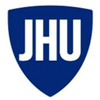
4. University of Texas MD Anderson Cancer Center

5. University of California - San Francisco
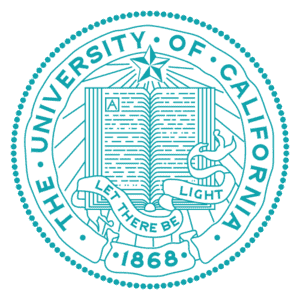
6. University of Michigan - Ann Arbor
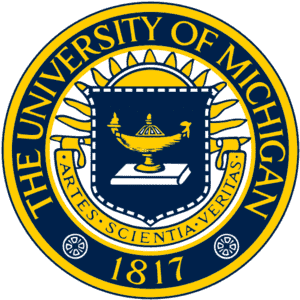

7. University of Washington - Seattle
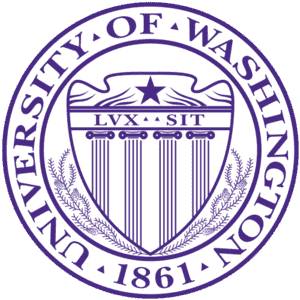
8. University of Pennsylvania

9. University of California - Los Angeles

10. Mayo Clinic College of Medicine and Science
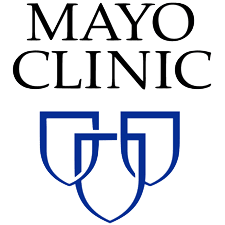
11. University of Wisconsin - Madison
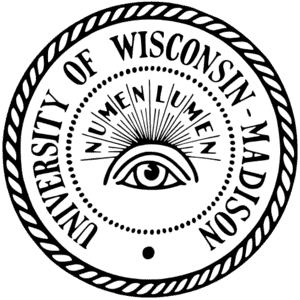
12. University of Chicago

13. Yale University
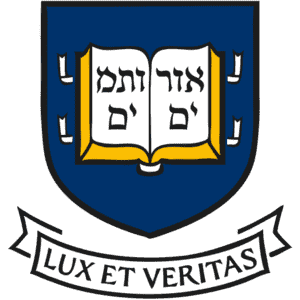
14. Emory University
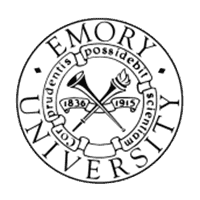
15. University of North Carolina at Chapel Hill

16. Cornell University

17. Washington University in St Louis

18. Columbia University
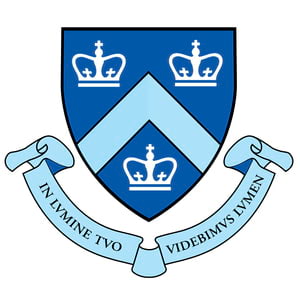
19. University of Pittsburgh

20. University of Alabama at Birmingham

21. University of Southern California

22. University of Texas Southwestern Medical Center

23. University of Florida
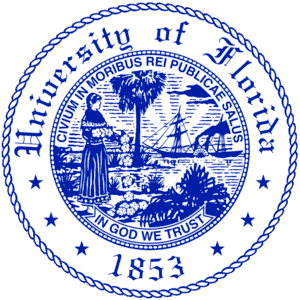
24. University of Maryland, Baltimore

25. Icahn School of Medicine at Mount Sinai
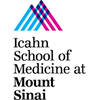
26. New York University
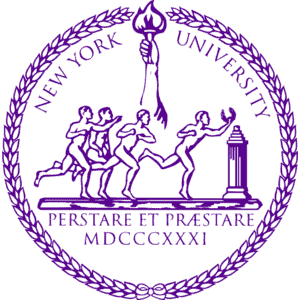
27. University of Iowa
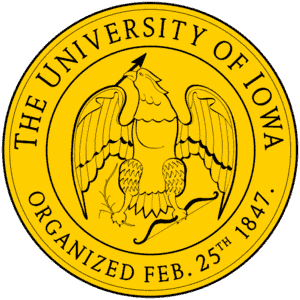
28. University of Colorado Denver/Anschutz Medical Campus

29. Northwestern University
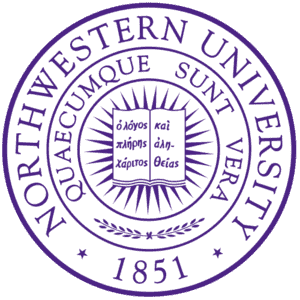
30. Indiana University - Purdue University - Indianapolis
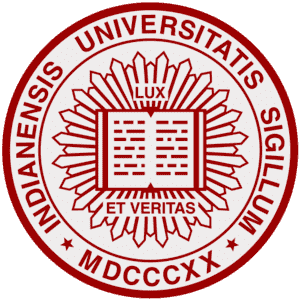
31. Oregon Health & Science University
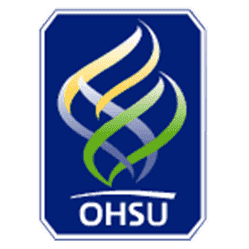
32. Duke University

33. University of California-San Diego

34. Vanderbilt University
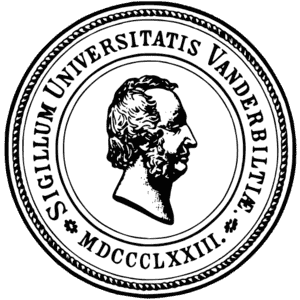
35. Georgetown University

36. University of Minnesota - Twin Cities
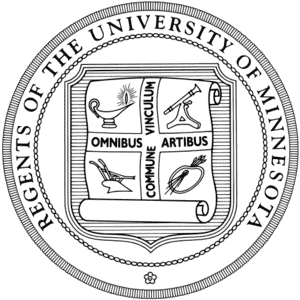
37. University of Virginia

38. University of Utah
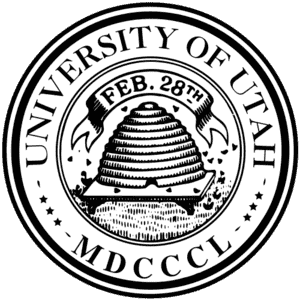
39. Case Western Reserve University

40. University of California - Davis
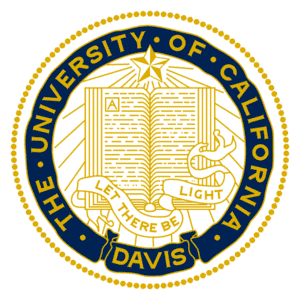
41. Baylor College of Medicine
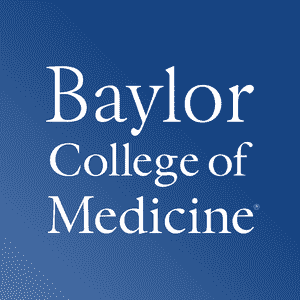
42. Medical College of Wisconsin
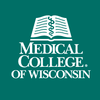
43. University of Illinois at Chicago

44. Medical University of South Carolina
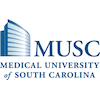
45. Boston University

46. University of Arizona

47. Ohio State University
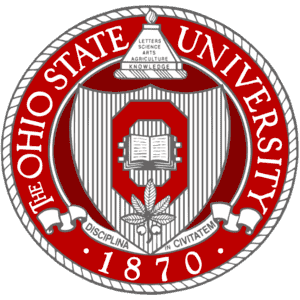
48. Wake Forest University

49. University of Texas Health Science Center at San Antonio
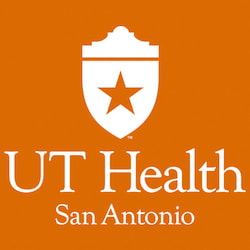
50. Thomas Jefferson University

51. Wayne State University
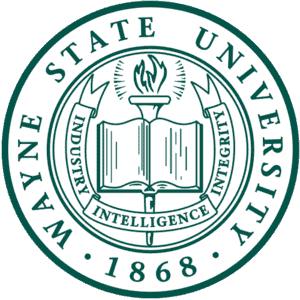
52. University of Miami
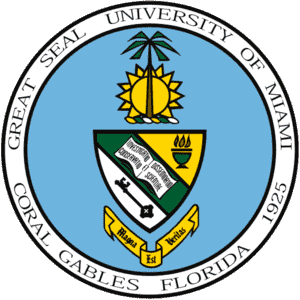
53. Brown University

54. University of Cincinnati

55. University of Texas Health Science Center at Houston
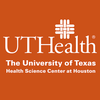
56. Providence College

57. Florida College

58. University of California - Irvine
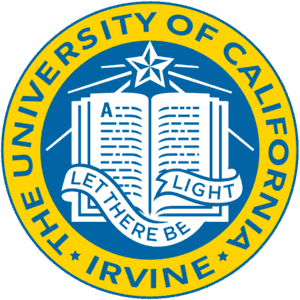
59. University of Kentucky
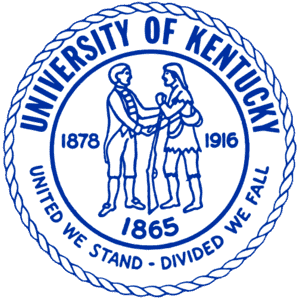
60. Tufts University

61. Virginia Commonwealth University
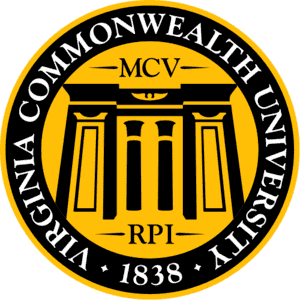
62. University of Massachusetts Medical School Worcester

63. University of Rochester
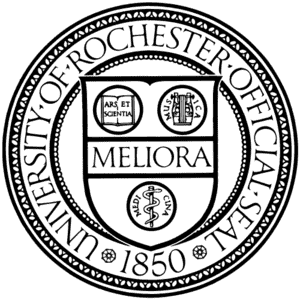
64. Pennsylvania State University

65. Massachusetts Institute of Technology

66. University of New Mexico
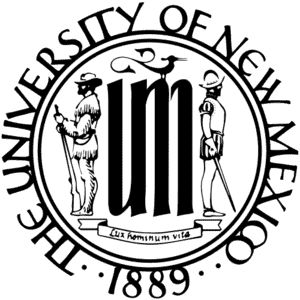
67. Dartmouth College

68. Rutgers University - New Brunswick
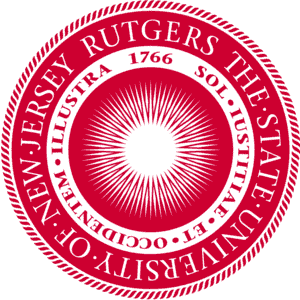
69. University at Buffalo

70. University of Baltimore

71. Seattle University

72. University of South Florida

73. University of Tennessee Health Science Center

74. University of Louisville

75. Uniformed Services University of the Health Sciences
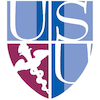
76. George Washington University

77. University of Nebraska Medical Center

78. University of Illinois at Urbana - Champaign
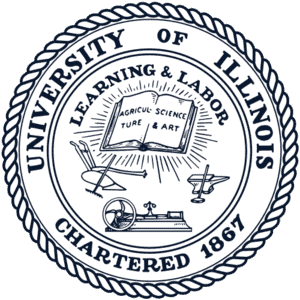
79. University of Arkansas for Medical Sciences
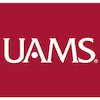
80. University of Missouri - Columbia

81. Pennsylvania State University - College of Medicine

82. University of Texas Medical Branch

83. Loma Linda University

84. Drexel University

85. Upstate Medical University

86. University of Tennessee - Knoxville

87. Michigan State University
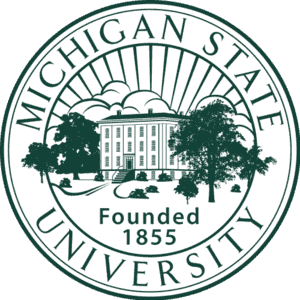
88. University of Vermont
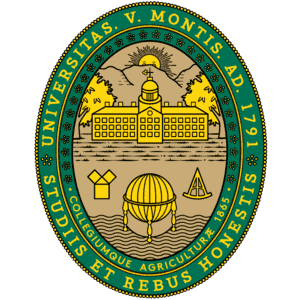
89. Saint Louis University
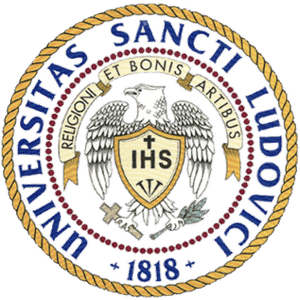
90. Georgia Institute of Technology

91. Augusta University

92. University of California - Berkeley
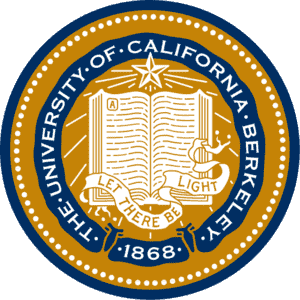
93. Tulane University of Louisiana

94. NorthShore University HealthSystem School of Nurse Anesthesia
95. rensselaer polytechnic institute.

96. Temple University
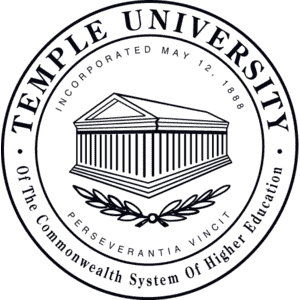
97. University of Texas at Austin

98. Phillips School of Nursing at Mount Sinai Beth Israel

99. Texas A&M University - College Station
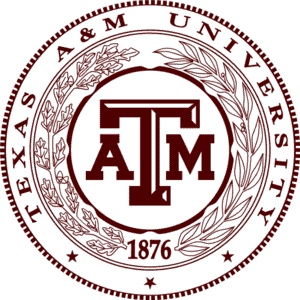
100. Louisiana State University and Agricultural & Mechanical College

The best cities to study Medical Physics in the United States based on the number of universities and their ranks are Cambridge , Stanford , Baltimore , and Houston .
Physics subfields in the United States
Certificate in Medical Physics

The Certificate program successfully prepares students to compete for residency positions. You will have the opportunity to shadow a qualified medical physicist on an elective basis throughout your time in the program at the University of Pennsylvania or at one of our hospital affiliates.
The Certificate in Medical Physics provides you with a curriculum based on the recommendations of AAPM report #197S, which outlines the ideal training for post-graduate education in medical physics. The coursework includes radiological physics, radiation protection, medical imaging, medical ethics/government regulation, anatomy and physiology, radiobiology, and the physics of radiation therapy. Six course units (CU)* (18 semester hours total) are required for the Certificate. Part-or full-time study is available beginning in the fall term. The typical full-time academic plan of study is:
* A CU (or a fraction of a CU) represents different types of academic work across different types of academic programs and is the basic unit of progress toward a degree. One CU is usually converted to a four-semester-hour course.
Program Highlights
Professional development and career mentoring.
Our unique and newly redesigned Professional Development Seminar course is a required, year-long, non-credit series of presentations and panel discussions designed to prepare you for success as a medical physicist . It introduces you to the subspecialties of medical physics: radiation oncology, diagnostic imaging, nuclear medicine, and medical health physics. Our scholars and practitioners of medical physics discuss possible career paths, new treatments and devices, and other topics from the front lines of the medical physics world. It introduces you to ideas and possibilities beyond the scope of your classes and creates the possibility for networking and finding your ideal career direction.
The Professional Development Seminar also prepares all our students for success in the medical physics residency application and match process. Students learn from faculty and medical physics residents how to assemble an impressive application for residency including an effective resume / CV, selection of references, and compelling personal statement. We provide tips to master the residency interview process and connect students with program alumni who provide further insight during the interview process. Career Mentors, faculty and staff physicists from the Department of Radiation Oncology, meet with students to provide feedback on their residency applications, conduct a practice interview, and offer career advice.
The course also helps you to develop the professional skills and competencies you need as a medical physicist. You learn best practices to work productively on teams; communicate effectively with doctors, patients, and administrators; write scientific abstracts; give oral presentations; and hone leadership skills. We provide advice on how to strategically approach the American Board of Radiology Part I Exam. Our series also features networking events with program alumni, faculty, and staff to further your involvement with our medical physics community.
Clinical Shadowing
The Certificate program offers opportunities for students to gain valuable clinical experience through the shadowing of qualified medical physicists. Shadowing offers a better understanding of the clinical responsibilities of medical physicists, including instrumentation methodology, calibration, treatment planning, and quality assurance.
- See us on twitter
Biomedical Physics PhD Admissions 2024
The Biomedical Physics (BMP) PhD program just completed its third admissions cycle. An admissions committee of faculty and students reviewed 98 applications from students around the world, of whom 24 were selected to participate in virtual interviews on February 13-15. We then identified six students to whom admission was offered, and all have accepted! Our BMP 2024 class, joining us this September, will be:

- MD | PhD Program
- Master's Programs
- PhD Programs
- Postdoctoral Fellows
- Residency & Fellowship
- Non-Degree Programs
- Visiting Students
- Campus Life at U-M
- Health & Wellness
- Building Your Community
- Accessibility & Disability
- Departments
- Centers & Institutes
- Interdisciplinary Programs
- Facts & Figures
- Medical School Leadership
- Research at the U-M Medical School
- News & Stories
- Requirements
- Interview Day
- Admissions Chats
- AAMC Michigan's 35 Answers
- AAMC Michigan's 10 Financial Aid Answers
- Admitted Students
- Overview & Highlights
- Patient Interaction
- Chief Concern
- Years 3 & 4
- Learning Informatics
- Training Sites
- Leadership Program
- Global Health & Disparities
- Health Policy
- Healthcare Innovation
- Medical Humanities
- Patient Safety & Quality Improvement
- Scientific Discovery
- Doctoring Course
- Evidence-Based Medicine
- Interprofessional Education
- DEIAJ Curriculum
- Language Opportunities
- Curriculum Diagrams
- Grading & Assessments
- Guideline Budget
- Loans & Eligibility
- Financial Aid Application Timeline
- Scholarships & Grants
- Documents & Forms
- Tips & Links
- Tuition Refund Policies
- Consumer Information
- Disbursement & Repayment
- MD Emergency Student Aid Fund
- MD Travel Grant
- Child Care Subsidy
- Residency Interviewing Loans and Resources
- Short-Term University Loan
- Contact the Office of Financial Aid
- Profiles & Demographics
- Culinary Connections
- Students with Disabilities
- Arts & Humanities
- Diversity & Health Equity
- Dual Degrees
- More Possibilities
- Commencement
- Available PhD Programs
- Academic & Social Events
- MSTP Fellows
- Application Process
- Application Requirements
- MD | PhD Curriculum
- Undergrad Summer Program
- Contact the MD | PhD Program
- Bioinformatics
- Biological Chemistry
- Cancer Biology
- Cell & Developmental Biology
- Cellular & Molecular Biology
- Genetics and Genomics
- Health Infrastructures & Learning Systems
- Microbiology & Immunology
- Molecular, Cellular & Developmental Biology
- Molecular & Cellular Pathology
- Molecular & Integrative Physiology
- Neuroscience
- Pharmacology
- Recruitment Events
- Interview Weekends
- Certificates & Dual Degrees
- Quantitative & Computational Biology Emphasis
- Training Grants
- Facilities & Resources
- Stipend & Benefits
- Professional Development
- Finding a Position
- Funding Your Postdoc
- Hiring Process
- Postdoc Preview
- International Postdocs
- ACGME Fellowships
- Non-Accredited Fellowships
- Postdoctoral Physician Scientist Training
- Salary & Benefits
- Prerequisites
- Visiting Residents & Fellows
- Application Overview & Requirements
- Tuition & Fees
- Timeline & Curriculum
- Information Sessions
- Program Details
- Undergrad Summer Research
- First Days Survival Guide
- Health Services
- Mental Health
- Health, Spirituality & Religion Program
- For Partners & Families
- Things to Do in Ann Arbor
- Getting Around
- Graduate Medical Education
- Office of Continuing Medical Education
- Office of Faculty Affairs & Faculty Development
- Office of Graduate & Postdoctoral Studies
- Physician Scientist Education & Training
- Office of Medical Student Education
- Points of Blue
- Diversity, Equity & Inclusion
- Department Outings
- PhD Program
- Accelerated MS Program
- PhD | MS Dual Degree Program
- Course Descriptions
- BIDS Training Program
- Proteogenomics Training Program
- Student Organizations
- Applications to Complex Genetic Diseases
- Biomedical Data Science, Translational Bioinformatics & Pharmacogenomics
- 4D Nucleome
- Genomics, Regulatory Genomics & Epigenomics
- Methodological Development in Computational Biology
- Multi-“omics” Integrative Bioinformatics
- Protein Structure, Proteomics & Alternative Splicing
- Systems Biology & Networks Analysis
- Software & Bioinformatics Tools
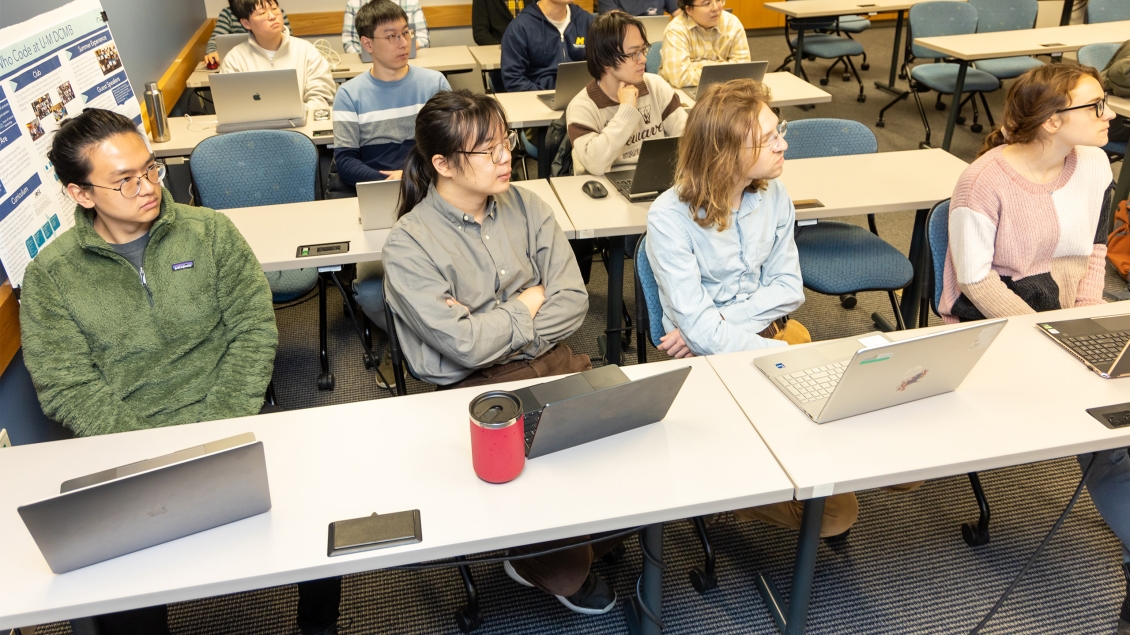
The Bioinformatics PhD Program is well established, with a long history of successful graduates in both academia and industry.
- How to Apply
- Application Materials
- Funding Sources
- Transition from Master's to PhD
- Frequently Asked Questions
To apply for the Bioinformatics PhD Program, you must submit complete applications by December 1 for admission the following Fall term. Early applications are not allowed and will not be considered.
Please visit the Rackham Graduate School web pages for additional information on applying. There you will also find information on how to respond to an offer of admission, plus tips and materials required for international applicants and incoming students.
If you are certain about pursuing a Bioinformatics PhD, then applications should be submitted directly to the Bioinformatics PhD Program ; there are more than 100 diverse affiliated faculty to choose from.
Applicants should be U.S. citizens or permanent residents. In addition, applicants with a background in quantitative sciences should consider applying directly. Separately, if you are transferring from another University of Michigan Program or have obtained an established University of Michigan mentor affiliated with the program, a direct application is most appropriate.
PIBS is an umbrella program that offers first-year PhD students flexibility in exploring opportunities in bioinformatics and thirteen other graduate programs. Through PIBS, students have the opportunity to rotate in, and potentially join the lab of a faculty mentor in another program; there are more than 500 diverse faculty to select from. PIBS students who list Bioinformatics as their primary choice must complete at least one rotation with a Bioinformatics-affiliated faculty member. After 10 months in PIBS, students officially join Bioinformatics (or one of the other programs). You can visit the PIBS website for more information.
Please note that reviewing admissions faculty for both PIBS and direct applications are the same. In addition, admitted applicants take the same Bioinformatics-specific courses and activities. See below for details on program diversity outreach, application materials, and funding.
Students who will have an MS in a relevant field (e.g. computer science, statistics, biostatistics, biology) from another university may request to have up to 6 credit-hours (two classes) waived. These classes may be used to help fulfill the core PhD requirements for biology (1 course), statistics (2 courses), and/or computing (1 course). To obtain approval, students need to send a detailed syllabus of the class(es) they took to the PhD directors along with their grade(s), which must be a B or better. The other PhD course requirements, including BIOINF-529 and two advanced bioinformatics courses, cannot be waived.
Most international Bioinformatics PhD applicants should apply through PIBS. However, some who are already embedded in a University of Michigan mentor lab affiliated with the program may be an appropriate fit for the direct Bioinformatics PhD program.
The TOEFL or IELTS exam is required unless Rackham Graduate School waiver requirements have been met. Criteria for English proficiency exemption can be found on the Rackham website . In addition, a list of required credentials from non-U.S. institutions for an application can be found here.
The Bioinformatics Graduate Program encourages applications from traditionally underrepresented minorities, students with disabilities, and those from disadvantaged backgrounds. There are numerous funding opportunities and resources on campus to contribute to students overall well-being while pursuing studies. Several resources available to students can be found on the Rackham Graduate School Diversity, Equity, and Inclusion website .
We find a new reason to love Ann Arbor nearly every day — year-round outdoor activities, cultural experiences, a growing food scene, and a welcoming, family-friendly atmosphere are just a few that come to mind. Explore all that Ann Arbor and our surrounding communities have to offer.
All application materials should be submitted electronically when possible. Applicants must meet Rackham's Minimum Requirements for Admission . The online application form can be found on the Rackham Admissions webpages. The application is available in early September through the deadline.
- GPA, minimum 3.2/4.0 (exceptions may be made if deemed appropriate)
- Letters of recommendation (3 required): Please be aware that submitting only the Rackham Recommendation for Admission Form is insufficient; forms must be accompanied by a letter from the recommender. All letters are due by the application deadline. Without them, applications will not be considered complete or reviewed by the Program Admissions Committee.
- Statement of Purpose: The Statement of Purpose should be a concise, well-written statement about your academic and research background, your career goals, and how Michigan's graduate program will help you meet your career and educational objectives.
- Personal Statement: The Personal Statement should be a concise, well-written statement about how your personal background and life experiences, including social, cultural, familial, educational, or other opportunities or challenges, motivated your decision to pursue a graduate degree at the University of Michigan. This is not an Academic Statement of Purpose, but a discussion of the personal journey that has led to your decision to seek a graduate degree.
- Transcripts: Please submit unofficial transcripts electronically with your online application
- GRE scores are no longer included as part of admission
- Applicants whose native language is not English must demonstrate English proficiency via either the TOEFL or IELTS exam. The institution code is 1839. Other exams may not be substituted. Rackham Graduate School offers a full explanation of this requirement , including exemption criteria. Please contact Rackham directly ( [email protected] ) with questions.
Diversity is a key component of excellence, especially for solving the complex biomedical challenges that our field of computational medicine and bioinformatics faces. We believe that all people—regardless of background, race, religion, sexual/gender orientation, age or disability—deserve an equitable opportunity to pursue the education and career of their choice.
The Bioinformatics Graduate Program will provide tuition, healthcare coverage, and a stipend on a 12-month basis. This level of support will be maintained throughout a student's tenure in the Program, provided s/he remains in good academic standing and makes reasonable progress towards the degree as determined by the Graduate Directors, with faculty input. It is expected that the student will be supported directly by the mentor's laboratory, beginning in the second year. The expected time to degree is typically 5-6 years.
The U-M MS program is a terminal degree program. If you are interested in the Bioinformatics PhD Program, you must submit a new application. If you are a Bioinformatics MS student who is in good academic standing and has identified a Bioinformatics affiliated faculty mentor, you may apply for admission directly to the PhD Bioinformatics Program for the Winter term. Reviewing faculty take all application components into account and mentors are prepared to take both academic and financial responsibility for their trainees.
Eligibility: Only current or recently graduated University of Michigan Master’s students are eligible. Before applying, students must have completed more than half of all required courses, with at least six credits from the Bioinformatics Program.
Application deadline: October 1
The online application form can be found on the Rackham Admissions webpages. The application is available in early September through the deadline.
- Letters of recommendation: Please be aware that submitting only the Rackham Recommendation for Admission Form is insufficient; forms must be accompanied by a letter from the recommender. If you wish to include three letters from your original application, only one additional letter is needed. It must be from the DCMB faculty member who will serve as your primary mentor. The letter should state clearly that the mentor takes responsibility for your funding upon admission. Alternatively, you may wish to obtain three new letters of recommendation. The Admissions Committee strongly encourages you to include letters from those familiar with your research and coursework obtained while pursuing your Master’s degree. Of these, one must be from the faculty member who will serve as your primary mentor. The letter should state clearly that the mentor takes responsibility for your funding upon admission.
- Statement of Purpose: The Statement of Purpose should be a concise, well-written statement about your academic and research background, your career goals, and how the PhD Program will help you meet your career and educational objectives.
- Transcripts: Only a current, unofficial U-M transcript is necessary. You do not need to re-submit materials included with your Master’s application.
- TOEFL: If you submitted TOEFL scores when applying to the Master’s Program, additional test scores are not needed.
Bioinformatics consists of a mathematical and/or statistical analysis of a biomedical problem using computation. We define bioinformatics widely and include traditional bioinformatics areas such as for examples, systems biology, genomics, proteomics, plus statistical and evolutionary genetics, clinical informatics, and protein modeling.
As an interdisciplinary field, Bioinformatics attracts graduate students from mathematics, statistics, physics, computer science, biomedical engineering, chemistry, biochemistry and biology. Most incoming students have both a major in one and a minor in another discipline. In recent years students have entered with undergraduate training in bioinformatics or computational biology.
Each student obtains individual counseling by one of the two graduate program directors upon arrival and throughout their academic career. As Bioinformatics is still developing, new courses are added all the time. Current students are encouraged to contact the Program Directors about courses that may be relevant to their studies and are not listed on the website (esp. if they are new or infrequently offered).
In most cases, we recommend you apply to the PIBS program, as it provides flexibility in classes, funding, and a central admission for many biomedical programs. If you have no or very little biology background, please contact our Student Services Representative as to whether a direct application would be better. Current student who are considering transferring areas of study should also contact the Bioinformatics Graduate Office.
There is no need to apply both direct and through PIBS, as the same committee sees your applications.
For most students, thesis work includes computing, reading, and writing. A small group also participates in wet laboratory work. Please check both the research areas and student webpages for an overview of the varied subjects addressed in research and student theses.
Many of our graduate students obtain academic postdoctoral fellowships and go on to faculty positions. Quite a significant number of graduates go into non-academic professions such as small or large biotech companies. Some have founded their own business, and others apply their analytical skills in companies unrelated to bioinformatics. For a current list of graduate placement, please visit the alumni pages.
No. If you want to get a PhD, directly apply to the PhD Program.
We transform lives through bold discovery, compassionate care and innovative education.
- Find a Doctor
- Conditions & Treatments
- Patient & Visitor Guide
- Patient Portal
- Clinical Trials
- Research Labs
- Research Centers
- Cores and Resources
- Programs & Admissions
- Our Community
- Departments, Centers & Offices
- About the Medical School
Global Footer Secondary Navigation
At this time, we recommend all Penn-affiliated travel to Israel, West Bank, Gaza, and Lebanon be deferred. If you are planning travel to any of these locations, please reach out to [email protected] for the most up to date risk assessment and insurance exclusions. As a reminder, it is required that all Penn-affiliated trips are registered in MyTrips . If you have questions, please contact [email protected] .
Utility Navigation
Utility links.
- University of Pennsylvania
- Office of the Provost
- Penn Global
Secondary Nav Penn Global
- For Penn Students
- For Penn Faculty
- For Alumni & Friends
Primary Nav Penn Global
Drawer menu penn global.
- Back to main menu
- Our Strategic Framework
- Perry World House
- Penn Biden Center
- Penn Abroad
- International Student & Scholar Services
- Global Support Services
- Penn in Africa
- Penn in China
- 2022 PLAC Symposium
- Pulitzer International Reporting Student Fellowship
- Connect with PLAC
- Penn in Oceania
- Penn in the Middle East
- Penn in Northern America
- Global at Penn's Schools
- Global Centers & Programs
- Global Engagement Fund
- China Research and Engagement Fund
- India Research and Engagement Fund
- Holman Africa Research and Engagement Fund
- Apply for a Convening Grant
- Apply for a Research Grant
- Manage My Grant
- Grants Database
PENN GLOBAL RESEARCH & ENGAGEMENT GRANT PROGRAM 2024 Grant Program Awardees
Basic page sidebar menu penn global.
In 2024, Penn Global will support 24 new faculty-led research and engagement projects at a total funding level of $1.5 million.
The Penn Global Research and Engagement Grant Program prioritizes projects that bring together leading scholars and practitioners across the University community and beyond to develop new insight on significant global issues in key countries and regions around the world, a core pillar of Penn’s global strategic framework.
PROJECTS SUPPORTED BY THE HOLMAN AFRICA RESEARCH AND ENGAGEMENT FUND
- Global Medical Physics Training & Development Program Stephen Avery, Perelman School of Medicine
- Developing a Dakar Greenbelt with Blue-Green Wedges Proposal Eugenie Birch, Weitzman School of Design
- Emergent Judaism in Sub-Saharan Africa Peter Decherney, School of Arts and Sciences / Sara Byala, School of Arts and Sciences
- Determinants of Cognitive Aging among Older Individuals in Ghana Irma Elo, School of Arts and Sciences
- Disrupted Aid, Displaced Lives Guy Grossman, School of Arts and Sciences
- A History of Regenerative Agriculture Practices from the Global South: Case Studies from Ethiopia, Kenya, and Zimbabwe Thabo Lenneiye, Kleinman Energy Center / Weitzman School of Design
- Penn Computerized Neurocognitive Battery Use in Botswana Public Schools Elizabeth Lowenthal, Perelman School of Medicine
- Podcasting South African Jazz Past and Present Carol Muller, School of Arts and Sciences
- Lake Victoria Megaregion Study: Joint Lakefront Initiative Frederick Steiner, Weitzman School of Design
- Leveraging an Open Source Software to Prevent and Contain AMR Jonathan Strysko, Perelman School of Medicine
- Poverty reduction and children's neurocognitive growth in Cote d'Ivoire Sharon Wolf, Graduate School of Education
- The Impacts of School Connectivity Efforts on Education Outcomes in Rwanda Christopher Yoo, Carey Law School
PROJECTS SUPPORTED BY THE INDIA RESEARCH AND ENGAGEMENT FUND
- Routes Beyond Conflict: A New Approach to Cultural Encounters in South Asia Daud Ali, School of Arts and Sciences
- Prioritizing Air Pollution in India’s Cities Tariq Thachil, Center for the Advanced Study of India / School of Arts and Sciences
- Intelligent Voicebots to Help Indian Students Learn English Lyle Ungar, School of Engineering and Applied Sciences
PROJECTS SUPPORTED BT THE CHINA RESEARCH AND ENGAGEMENT FUND
- Planning Driverless Cities in China Zhongjie Lin, Weitzman School of Design
PROJECTS SUPPORTED BY THE GLOBAL ENGAGEMENT FUND
- Education and Economic Development in Nepal Amrit Thapa, Graduate School of Education
- Explaining Climate Change Regulation in Cities: Evidence from Urban Brazil Alice Xu, School of Arts and Sciences
- Nurse Staffing Legislation for Scotland: Lessons for the U.S. and the U.K. Eileen Lake, School of Nursing
- Pathways to Education Development & Their Consequences: Finland, Korea, US Hyunjoon Park, School of Arts and Sciences
- Engaged Scholarship in Latin America: Bridging Knowledge and Action Tulia Falleti, School of Arts and Sciences
- Organizing Migrant Communities to Realize Rights in Palermo, Sicily Domenic Vitiello, Weitzman School of Design
- Exploiting Cultural Heritage in 21st Century Conflict Fiona Cunningham, School of Arts and Sciences
- Center for Integrative Global Oral Health Alonso Carrasco-Labra, School of Dental Medicine
This first-of-its-kind Global Medical Physics Training and Development Program (GMPTDP) seeks to serve as an opportunity for PSOM and SEAS graduate students to enhance their clinical requirement with a global experience, introduce them to global career opportunities and working effectively in different contexts, and strengthens partnerships for education and research between US and Africa. This would also be an exceptional opportunity for pre-med/pre-health students and students interested in health tech to have a hands-on global experience with some of the leading professionals in the field. The project will include instruction in automated radiation planning through artificial intelligence (AI); this will increase access to quality cancer care by standardizing radiation planning to reduce inter-user variability and error, decreasing workload on the limited radiation workforce, and shortening time to treatment for patients. GMPTDP will offer a summer clinical practicum to Penn students during which time they will also collaborate with UGhana to implement and evaluate AI tools in the clinical workflow.
The proposal will address today’s pressing crises of climate change, land degradation, biodiversity loss, and growing economic disparities with a holistic approach that combines regional and small-scale actions necessary to achieve sustainability. It will also tackle a key issue found across sub-Saharan Africa, many emerging economies, and economically developed countries that struggle to control rapid unplanned urbanization that vastly outpaces the carrying capacity of the surrounding environment.
The regional portion of the project will create a framework for a greenbelt that halts the expansion of the metropolitan footprint. It will also protect the Niayes, an arable strip of land that produces over 80% of the country’s vegetables, from degradation. This partnership will also form a south-south collaboration to provide insights into best practices from a city experiencing similar pressures.
The small-scale portion of the project will bolster and create synergy with ongoing governmental and grassroots initiatives aimed at restoring green spaces currently being infilled or degraded in the capital. This will help to identify overlapping goals between endeavors, leading to collaboration and mobilizing greater funding possibilities instead of competing over the same limited resources. With these partners, we will identify and design Nature-based Solutions for future implementation.
Conduct research through fieldwork to examine questions surrounding Jewish identity in Africa. Research will be presented in e.g. articles, photographic images, and films, as well as in a capstone book. In repeat site-visits to Uganda, South Africa, Ghana, and Zimbabwe, we will conduct interviews with and take photographs of stakeholders from key communities in order to document their everyday lives and religious practices.
The overall aim of this project is the development of a nationally representative study on aging in Ghana. This goal requires expanding our network of Ghanian collaborators and actively engage them in research on aging. The PIs will build on existing institutional contacts in Ghana that include:
1). Current collaboration with the Navrongo Health Research Center (NCHR) on a pilot data collection on cognitive aging in Ghana (funded by a NIA supplement and which provides the matching funds for this Global Engagement fund grant application);
2) Active collaboration with the Regional Institute for Population Studies (RIPS), University of Ghana. Elo has had a long-term collaboration with Dr. Ayaga Bawah who is the current director of RIPS.
In collaboration with UNHCR, we propose studying the effects of a dramatic drop in the level of support for refugees, using a regression discontinuity design to survey 2,500 refugee households just above and 2,500 households just below the vulnerability score cutoff that determines eligibility for full rations. This study will identify the effects of aid cuts on the welfare of an important marginalized population, and on their livelihood adaptation strategies. As UNHCR faces budgetary cuts in multiple refugee-hosting contexts, our study will inform policymakers on the effects of funding withdrawal as well as contribute to the literature on cash transfers.
The proposed project, titled "A History of Regenerative Agriculture Practices from the Global South: Case Studies from Ethiopia, Kenya, and Zimbabwe," aims to delve into the historical and contemporary practices of regenerative agriculture in sub-Saharan Africa. Anticipated Outputs and Outcomes:
1. Research Paper: The primary output of this project will be a comprehensive research paper. This paper will draw from a rich pool of historical and contemporary data to explore the history of regenerative agriculture practices in Ethiopia, Kenya, and Zimbabwe. It will document the indigenous knowledge and practices that have sustained these regions for generations.
2. Policy Digest: In addition to academic research, the project will produce a policy digest. This digest will distill the research findings into actionable insights for policymakers, both at the national and international levels. It will highlight the benefits of regenerative agriculture and provide recommendations for policy frameworks that encourage its adoption.
3. Long-term Partnerships: The project intends to establish long-term partnerships with local and regional universities, such as Great Lakes University Kisumu, Kenya. These partnerships will facilitate knowledge exchange, collaborative research, and capacity building in regenerative agriculture practices. Such collaborations align with Penn Global's goal of strengthening institutional relationships with African partners.
The Penn Computerized Neurocognitive Battery (PCNB) was developed at the University of Pennsylvania by Dr. Ruben C. Gur and colleagues to be administered as part of a comprehensive neuropsychiatric assessment. Consisting of a series of cognitive tasks that help identify individuals’ cognitive strengths and weaknesses, it has recently been culturally adapted and validated by our team for assessment of school-aged children in Botswana . The project involves partnership with the Botswana Ministry of Education and Skills Development (MoESD) to support the rollout of the PCNB for assessment of public primary and secondary school students in Botswana. The multidisciplinary Penn-based team will work with partners in Botswana to guide the PCNB rollout, evaluate fidelity to the testing standards, and track student progress after assessment and intervention. The proposed project will strengthen a well-established partnership between Drs. Elizabeth Lowenthal and J. Cobb Scott from the PSOM and in-country partners. Dr. Sharon Wolf, from Penn’s Graduate School of Education, is an expert in child development who has done extensive work with the Ministry of Education in Ghana to support improvements in early childhood education programs. She is joining the team to provide the necessary interdisciplinary perspective to help guide interventions and evaluations accompanying this new use of the PCNB to support this key program in Africa.
This project will build on exploratory research completed by December 24, 2023 in which the PI interviewed about 35 South Africans involved in jazz/improvised music mostly in Cape Town: venue owners, curators, creators, improvisers.
- Podcast series with 75-100 South African musicians interviewed with their music interspersed in the program.
- 59 minute radio program with extended excerpts of music inserted into the interview itself.
- Create a center of knowledge about South African jazz—its sound and its stories—building knowledge globally about this significant diasporic jazz community
- Expand understanding of “jazz” into a more diffuse area of improvised music making that includes a wide range of contemporary indigenous music and art making
- Partner w Lincoln Center Jazz (and South African Tourism) to host South Africans at Penn
This study focuses on the potential of a Megaregional approach for fostering sustainable development, economic growth, and social inclusion within the East African Community (EAC), with a specific focus on supporting the development of A Vision for An Inclusive Joint Lakefront across the 5 riparian counties in Kenya.
By leveraging the principles of Megaregion development, this project aims to create a unified socio-economic, planning, urbanism, cultural, and preservation strategy that transcends county boundaries and promotes collaboration further afield, among the EAC member countries surrounding the Lake Victoria Basin.
Anticipated Outputs and Outcomes:
1. Megaregion Conceptual Framework: The project will develop a comprehensive Megaregion Conceptual Framework for the Joint Lakefront region in East Africa. This framework, which different regions around the world have applied as a way of bridging local boundaries toward a unified regional vision will give the Kisumu Lake region a path toward cooperative, multi-jurisdictional planning. The Conceptual Framework will be both broad and specific, including actionable strategies, projects, and initiatives aimed at sustainable development, economic growth, social inclusion, and environmental stewardship.
2. Urbanism Projects: Specific urbanism projects will be proposed for key urban centers within the Kenyan riparian counties. These projects will serve as tangible examples of potential improvements and catalysts for broader development efforts.
3. Research Publication: The findings of the study will be captured in a research publication, contributing to academic discourse and increasing Penn's visibility in the field of African urbanism and sustainable development
Antimicrobial resistance (AMR) has emerged as a global crisis, causing more deaths than HIV/AIDS and malaria worldwide. By engaging in a collaborative effort with the Botswana Ministry of Health’s data scientists and experts in microbiology, human and veterinary medicine, and bioinformatics, we will aim to design new electronic medical record system modules that will:
Aim 1: Support the capturing, reporting, and submission of microbiology data from sentinel surveillance laboratories as well as pharmacies across the country
Aim 2: Develop data analytic dashboards for visualizing and characterizing regional AMR and AMC patterns
Aim 3: Submit AMR and AMC data to regional and global surveillance programs
Aim 4: Establish thresholds for alert notifications when disease activity exceeds expected incidence to serve as an early warning system for outbreak detection.
Using a novel interdisciplinary approach that bridges development economics, psychology, and neuroscience, the overall goal of this project is to improve children's development using a poverty-reduction intervention in Cote d'Ivoire (CIV). The project will directly measure the impacts of cash transfers (CTs) on neurocognitive development, providing a greater understanding of how economic interventions can support the eradication of poverty and ensure that all children flourish and realize their full potential. The project will examine causal mechanisms by which CTs support children’s healthy neurocognitive development and learning outcomes through the novel use of an advanced neuroimaging tool, functional Near Infrared Spectroscopy (fNIRS), direct child assessments, and parent interviews.
The proposed research, the GIGA initiative for Improving Education in Rwanda (GIER), will produce empirical evidence on the impact of connecting schools on education outcomes to enable Rwanda to better understand how to accelerate the efforts to bring connectivity to schools, how to improve instruction and learning among both teachers and students, and whether schools can become internet hubs capable of providing access e-commerce and e-government services to surrounding communities. In addition to evaluating the impact of connecting schools on educational outcomes, the research would also help determine which aspects of the program are critical to success before it is rolled out nationwide.
Through historical epigraphic research, the project will test the hypothesis that historical processes and outcomes in the 14th century were precipitated by a series of related global and local factors and that, moreover, an interdisciplinary and synergistic analysis of these factors embracing climatology, hydrology, epidemiology linguistics and migration will explain the transformation of the cultural, religious and social landscapes of the time more effectively than the ‘clash of civilizations’ paradigm dominant in the field. Outputs include a public online interface for the epigraphic archive; a major international conference at Penn with colleagues from partner universities (Ghent, Pisa, Edinburgh and Penn) as well as the wider South Asia community; development of a graduate course around the research project, on multi-disciplinary approaches to the problem of Hindu-Muslim interaction in medieval India; and a public facing presentation of our findings and methods to demonstrate the path forward for Indian history. Several Penn students, including a postdoc, will be actively engaged.
India’s competitive electoral arena has failed to generate democratic accountability pressures to reduce toxic air. This project seeks to broadly understand barriers to such pressures from developing, and how to overcome them. In doing so, the project will provide the first systematic study of attitudes and behaviors of citizens and elected officials regarding air pollution in India. The project will 1) conduct in-depth interviews with elected local officials in Delhi, and a large-scale survey of elected officials in seven Indian states affected by air pollution, and 2) partner with relevant civil society organizations, international bodies like the United Nations Environment Program (UNEP), domain experts at research centers like the Public Health Foundation of India (PHFI), and local civic organizations (Janagraaha) to evaluate a range of potential strategies to address pollution apathy, including public information campaigns with highly affected citizens (PHFI), and local pollution reports for policymakers (Janagraaha).
The biggest benefit from generative AI such as GPT, will be the widespread availability of tutoring systems to support education. The project will use this technology to build a conversational voicebot to support Indian students in learning English. The project will engage end users (Indian tutors and their students) in the project from the beginning. The initial prototype voice-driven conversational system will be field-tested in Indian schools and adapted. The project includes 3 stages of development:
1) Develop our conversational agent. Specify the exact initial use case and Conduct preliminary user testing.
2) Fully localize to India, addressing issues identified in Phase 1 user testing.
3) Do comprehensive user testing with detailed observation of 8-12 students using the agent for multiple months; conduct additional assessments of other stakeholders.
The project partners with Ashoka University and Pratham over all three stages, including writing scholarly papers.
Through empirical policy analysis and data-based scenario planning, this project actively contributes to this global effort by investigating planning and policy responses to autonomous transportation in the US and China. In addition to publishing several research papers on this subject, the PI plans to develop a new course and organize a forum at PWCC in 2025. These initiatives are aligned with an overarching endeavor that the PI leads at the Weitzman School of Design, which aims to establish a Future Cities Lab dedicated to research and collaboration in the pursuit of sustainable cities.
This study aims to fill this gap through a more humanistic approach to measuring the impact of education on national development. Leveraging a mixed methods research design consisting of analysis of quantitative data for trends over time, observations of schools and classrooms, and qualitative inquiry via talking to people and hearing their stories, we hope to build a comprehensive picture of educational trends in Nepal and their association with intra-country development. Through this project we strive to better inform the efforts of state authorities and international organizations working to enhance sustainable development within Nepal, while concurrently creating space and guidance for further impact analyses. Among various methods of dissemination of the study’s findings, one key goal is to feed this information into writing a book on this topic.
Developing cities across the world have taken the lead in adopting local environmental regulation. Yet standard models of environmental governance begin with the assumption that local actors should have no incentives for protecting “the commons.” Given the benefits of climate change regulation are diffuse, individual local actors face a collective action problem. This project explores why some local governments bear the costs of environmental regulation while most choose to free-ride. The anticipated outputs of the project include qualitative data that illuminate case studies and the coding of quantitative spatial data sets for studying urban land-use. These different forms of data collection will allow me to develop and test a theoretical framework for understanding when and why city governments adopt environmental policy.
The proposed project will develop new insights on the issue of legislative solutions to the nurse staffing crisis, which will pertain to many U.S. states and U.K. countries. The PI will supervise the nurse survey data collection and to meet with government and nursing association stakeholders to plan the optimal preparation of reports and dissemination of results. The anticipated outputs of the project are a description of variation throughout Scotland in hospital nursing features, including nurse staffing, nurse work environments, extent of adherence to the Law’s required principles, duties, and method, and nurse intent to leave. The outcomes will be the development of capacity for sophisticated quantitative research by Scottish investigators, where such skills are greatly needed but lacking.
The proposed project will engage multi-cohort, cross-national comparisons of educational-attainment and labor-market experiences of young adults in three countries that dramatically diverge in how they have developed college education over the last three decades: Finland, South Korea and the US. It will produce comparative knowledge regarding consequences of different pathways to higher education, which has significant policy implications for educational and economic inequality in Finland, Korea, the US, and beyond. The project also will lay the foundation for ongoing collaboration among the three country teams to seek external funding for sustained collaboration on educational analyses.
With matching funds from PLAC and CLALS, we will jointly fund four scholars from diverse LAC countries to participate in workshops to engage our community regarding successful practices of community-academic partnerships.
These four scholars and practitioners from Latin America, who are experts on community-engaged scholarship, will visit the Penn campus during the early fall of 2024. As part of their various engagements on campus, these scholars will participate after the workshops as key guest speakers in the 7th edition of the Penn in Latin America and the Caribbean (PLAC) Conference, held on October 11, 2024, at the Perry World House. The conference will focus on "Public and Community Engaged Scholarship in Latin America, the Caribbean, and their Diasporas."
Palermo, Sicily, has been a leading center of migrant rights advocacy and migrant civic participation in the twenty-first century. This project will engage an existing network of diverse migrant community associations and anti-mafia organizations in Palermo to take stock of migrant rights and support systems in the city. Our partner organizations, research assistants, and cultural mediators from different communities will design and conduct a survey and interviews documenting experiences, issues and opportunities related to various rights – to asylum, housing, work, health care, food, education, and more. Our web-based report will include recommendations for city and regional authorities and other actors in civil society. The last phase of our project will involve community outreach and organizing to advance these objectives. The web site we create will be designed as the network’s information center, with a directory of civil society and services, updating an inventory not current since 2014, which our partner Diaspore per la Pace will continue to update.
This interdisciplinary project has four objectives: 1) to investigate why some governments and non-state actors elevated cultural heritage exploitation (CHX) to the strategic level of warfare alongside nuclear weapons, cyberattacks, political influence operations and other “game changers”; 2) which state or non-state actors (e.g. weak actors) use heritage for leverage in conflict and why; and 3) to identify the mechanisms through which CHX coerces an adversary (e.g. catalyzing international involvement); and 4) to identify the best policy responses for non-state actors and states to address the challenge of CHX posed by their adversaries, based on the findings produced by the first three objectives.
Identify the capacity of dental schools, organizations training oral health professionals and conducting oral health research to contribute to oral health policies in the WHO Eastern Mediterranean region, identify the barriers and facilitators to engage in OHPs, and subsequently define research priority areas for the region in collaboration with the WHO, oral health academia, researchers, and other regional stakeholders.
3539 Locust Walk University of Pennsylvania Philadelphia, PA 19104
©2024 University of Pennsylvania, Philadelphia, PA 19104
Footer Menu
- Report Accessibility Issues and Get Help
- Privacy Policy

IMAGES
VIDEO
COMMENTS
The Medical Physics Graduate Program is an interdisciplinary program sponsored by five departments: radiology, radiation oncology, physics, biomedical engineering, and occupational and environmental safety (health physics). ... The program has available one of the best medical centers in the United States, with outstanding facilities in ...
PhD Program in Medical Physics The Committee on Medical Physics offers a program to provide aspiring medical physicists with the knowledge they will need in their future professions. Our program leads to the Doctor of Philosophy degree with an emphasis on research that provides preparation for careers in academia, industry, and/or clinical ...
Contact Us Medical Physics Graduate Programs. Department of Radiation Oncology University of Pennsylvania Health System Perelman Center for Advanced Medicine - PCAM 2W 3400 Civic Center Blvd. Philadelphia, PA 19104 215-662-3617 Email Us Follow Us Facebook Instagram; Links of Interest ...
Accredited degrees: M.S., Medical Physics Program Director:Christopher Kleefeld, Ph.D. 353 (0) 91-495383 / Fax: 353 (0) 91-494584 [email protected]. Oregon Health and Science University Medical Physics Graduate Program 2730 SW Moody Avenue Portland, OR 97201 Program Director: Thomas Griglock, Ph.D. [email protected]
Medical physics is an applied branch of physics that applies physical energy to the diagnosis and treatment of disease. Professional medical physicists are involved in clinical service, consultation, research and teaching. At Purdue, the medical physics graduate program provides a strong foundation in radiological and applied physics training ...
HST's MEMP PhD Program Is this program a good fit for me? HST's Medical Engineering and Medical Physics (MEMP) PhD program offers a unique curriculum for engineers and scientists who want to impact patient care by developing innovations to prevent, diagnose, and treat disease. We're committed to welcoming applicants from a wide range of communities, backgrounds, and experiences.
The Biomedical Physics (BMP) Graduate Program is a PhD training program hosted by the Departments of Radiology and Radiation Oncology within the Stanford University School of Medicine. The objective of the PhD in BMP is to train students in research focused on technology translatable to clinical medicine, including radiation therapy, image ...
The department typically supports 85-95 percent of students enrolled in the medical physics graduate program through department or university fellowships, research or teaching assistantships, or NIH NRSA training grant appointments. All awards include a comprehensive health insurance program and remission of tuition.
The PhD program in Medical Physics is designed to train graduate students with a background in Physics, Engineering, or related science to become medical physicists practicing in research and clinical service in Radiation Oncology, Diagnostic Imaging, and/or Nuclear Medicine. Our objectives are to remain one of the top medical physics ...
PhD students in the program will take two qualify exams. The first one is the general qualify exam required by the Department of Biomedical Engineering, usually after two-semester study and before the third semester starts. The second qualify exam is required by the Medical Physics Graduate Program, usually after all coursework has been completed.
Core Medical Physics Courses (20 Cr) All Medical Physics students are required to take the following courses: ME.420.702 Radiological Physics and Dosimetry fall Yr 1; ME.420.703 Radiation Therapy Physics spring Yr 1; ME.420.704 spring Yr 1; ME.420.705 Medical Physics Seminar must be taken first three semesters, but only 1 credit can be counted ...
The Medical Physics Graduate Program is accredited by the Commission on Accreditation of Medical Physics Education Programs (CAMPEP) and offers MS and PhD degrees. ... sciences" - medical imaging, radiation therapy, and radiobiology - resulted in a renewal of interest in the program. In the US, the field of radiologic science is known as ...
The Medical Physics Graduate Program offers the Specialized Master of Science degree and the Master of Science and Doctor of Philosophy degrees through the MD Anderson Cancer Center UTHealth Houston Graduate School of Biomedical Sciences. ... During the same period medical physics, which had started in the United States around 1915, but had ...
The Medical Physics track is accredited by the Commission on Accreditation of Medical Physics Education Programs (CAMPEP), which recognizes that our training has met CAMPEP requirements. This is required for students who would like to establish a career in clinical medical physics.
ADDRESS. Physics & Biology in Medicine Graduate Program at UCLA. B2-115 CHS. Box 951721. Los Angeles, CA 90095-1721.
The Program consists of a core curriculum of medical and nuclear physics courses, a laboratory course, anatomy, two practicums, a tutorial, one elective, and a seminar. Specific course requirements are: APPH E4010: Introduction to nuclear science. APPH E4330: Radiobiology for medical physicists. APPH E4710: Radiation instrumentation lab, I.
UF Medical physics. Dedicated to improving the health and well-being of others through the advancement of the science of Medical Physics by implementing principles, methods, and techniques (in practice and in research) for the prevention, diagnosis, and treatment of human diseases.
Contact us For information on the Doctorate of Medical Physics, please contact: Patricia Candia, PhD, Manager, Academic Programs [email protected] 210-450-1718 Nikos Papanikolaou, PhD, DMP Program Director [email protected] 210-450-5664
MPGP Diversity, Equity, and Inclusion (DEI) Scholarship. The University of Pennsylvania Medical Physics Graduate Programs has a $30,000 scholarship over two years (applied as a tuition bill credit) to support a student from an underrepresented background who enrolls full-time in our Master of Science in Medical Physics degree program.Admitted applicants from Underrepresented Populations in the ...
Below is a list of best universities in the United States ranked based on their research performance in Medical Physics. A graph of 3.33M citations received by 122K academic papers made by 211 universities in the United States was used to calculate publications' ratings, which then were adjusted for release dates and added to final scores.
Penn's Certificate in Medical Physics offers a career pathway for individuals who have already earned a PhD in physics or a related field (e.g., engineering, computer science or physical chemistry) and a physics minor. The program is fully accredited by the Commission on Accreditation of Medical Physics Education Programs (CAMPEP). As such, our ...
Contact Us. Radiological Physics Division. Russell H. Morgan Department of Radiology and Radiological Science. Johns Hopkins University School of Medicine. 601 N. Caroline St., Suite 4263. Baltimore MD 21287. Phone: 443-287-2425. Fax: 410-614-1060. Admissions Inquiries: [email protected].
The Biomedical Physics PhD program just completed its third admissions cycle. An admissions committee of faculty and students reviewed 98 applications from students around the world, of whom 24 were selected to participate in virtual interviews on February 13-15. We then identified six students to whom admission was offered, and all have accepted! Our BMP 2024 class, joining us this September ...
The U-M MS program is a terminal degree program. If you are interested in the Bioinformatics PhD Program, you must submit a new application. If you are a Bioinformatics MS student who is in good academic standing and has identified a Bioinformatics affiliated faculty mentor, you may apply for admission directly to the PhD Bioinformatics Program for the Winter term.
Because the field is closely related to physical therapy, many students find it to be a natural stepping stone into one of the best physical therapy a DPT programs. [3] Kinesiology takes a well-rounded approach to health sciences, encouraging students to learn about biology, chemistry, and physics. More specifically, kinesiology programs ...
This first-of-its-kind Global Medical Physics Training and Development Program (GMPTDP) seeks to serve as an opportunity for PSOM and SEAS graduate students to enhance their clinical requirement with a global experience, introduce them to global career opportunities and working effectively in different contexts, and strengthens partnerships for ...
A slew of medical colleges have gone tuition-free in recent years. But experts say it's not enough to increase racial and ethnic diversity in the medical field. When the Einstein College of Medicine announced in February that a former faculty member donated a historic $1 billion to the institution to eliminate tuition for every student, leaders at the New York medical school lauded the gift ...